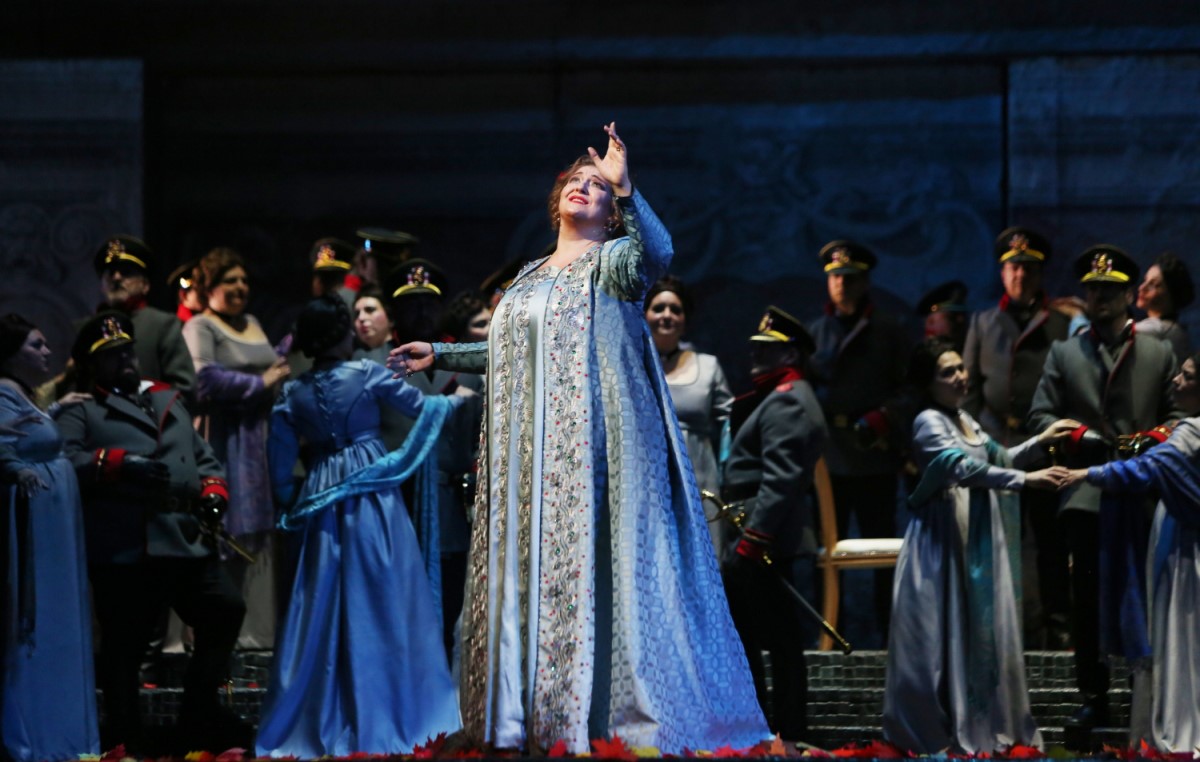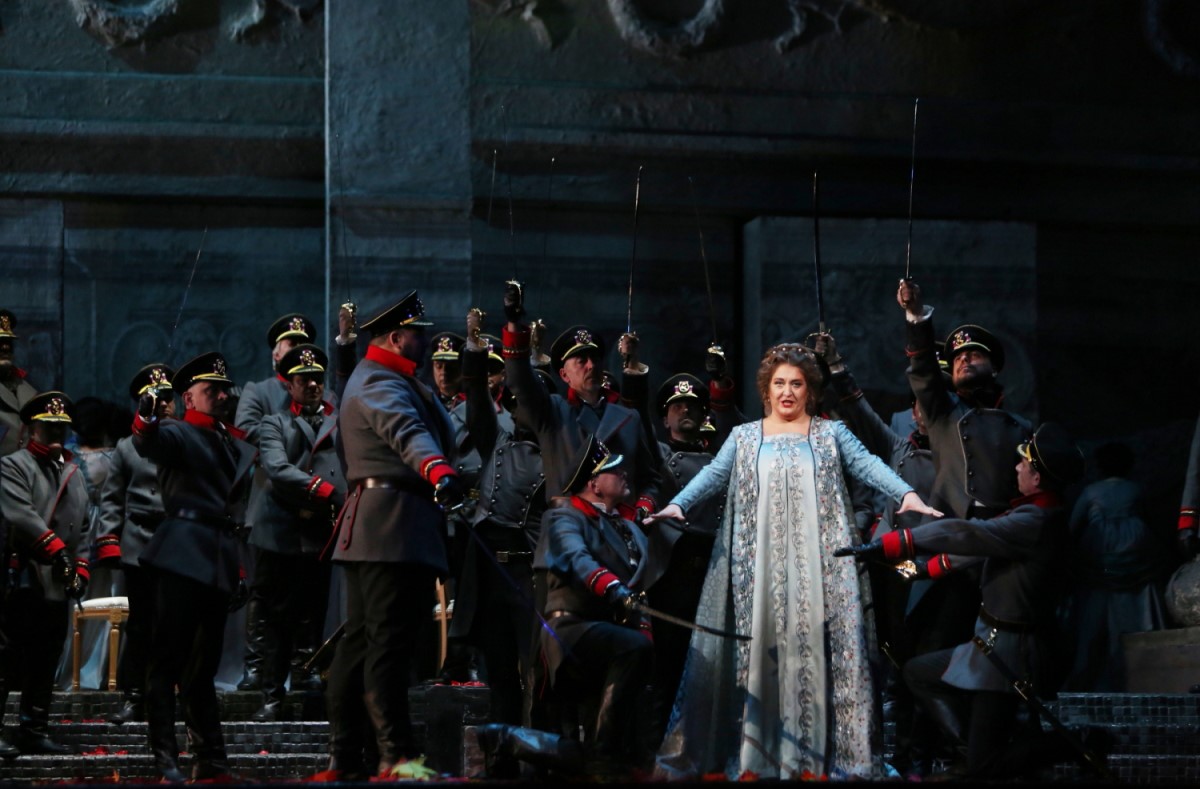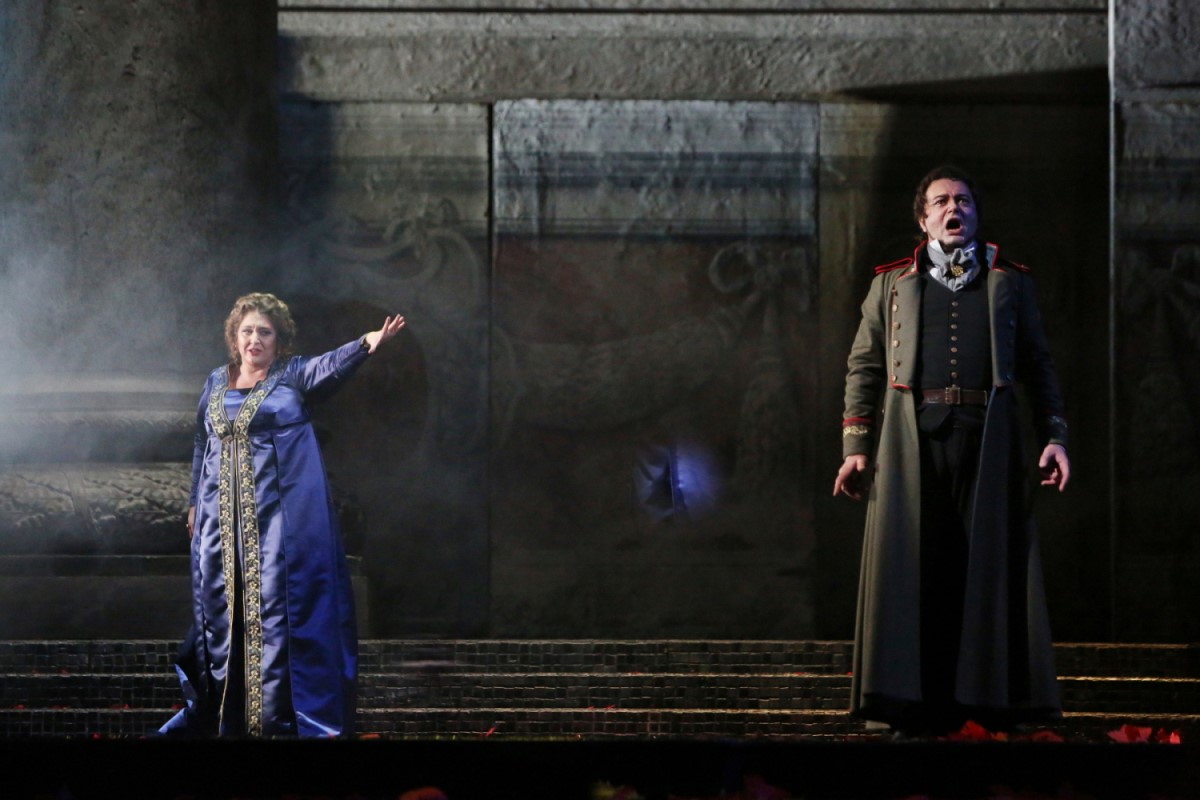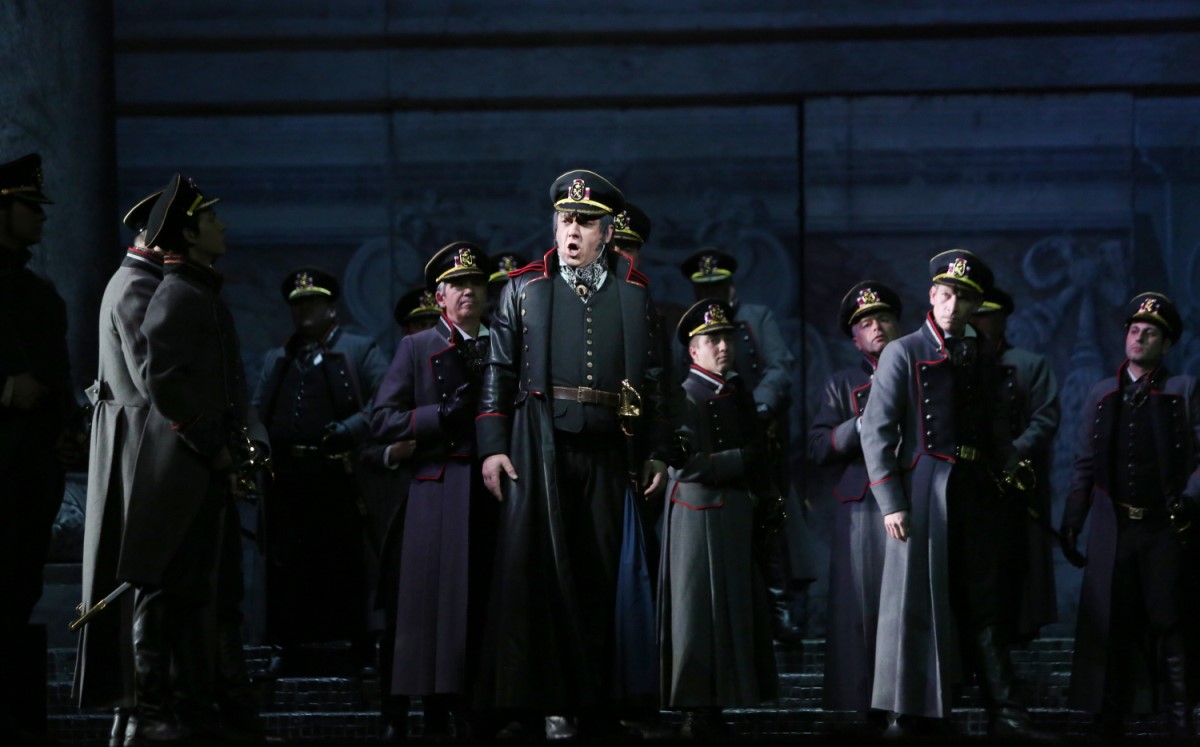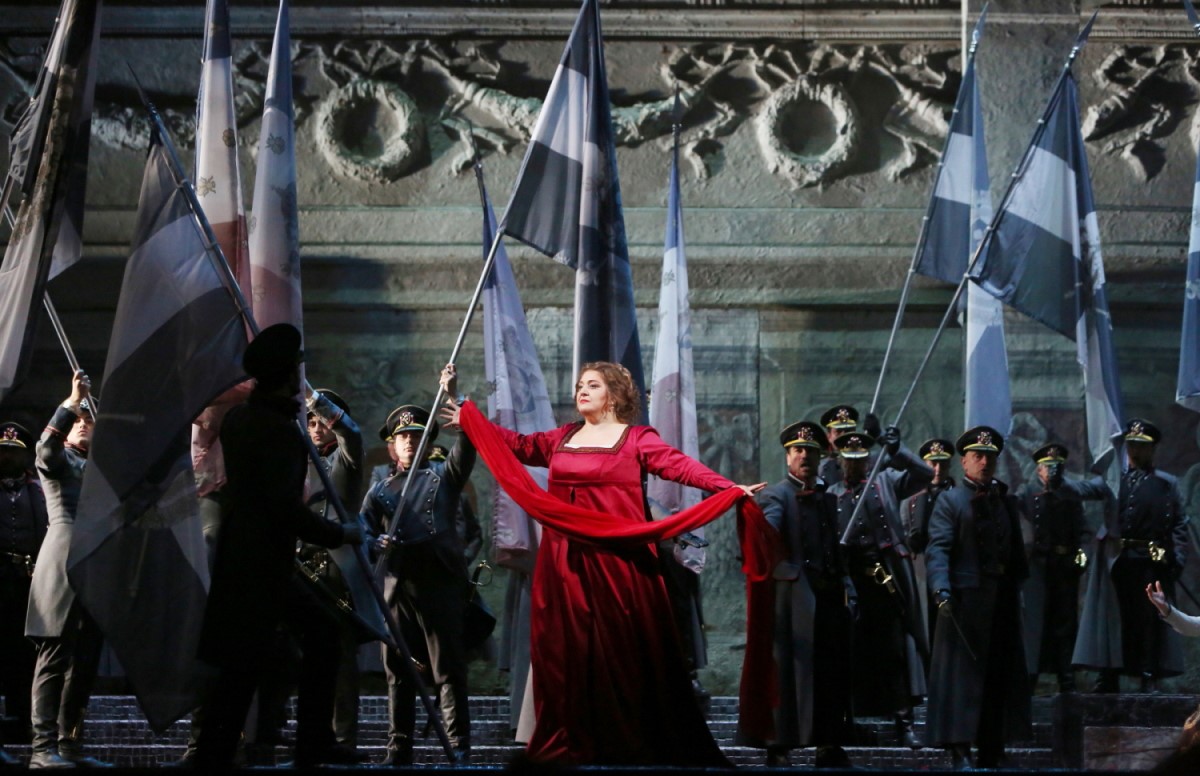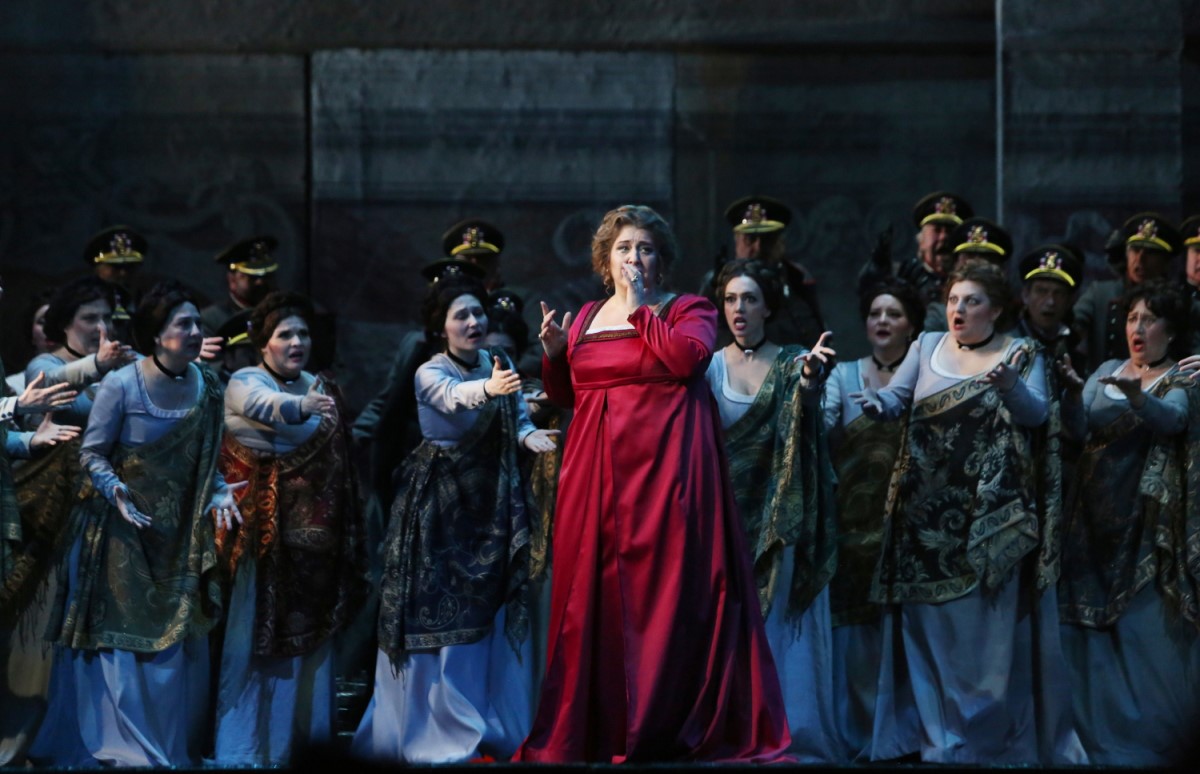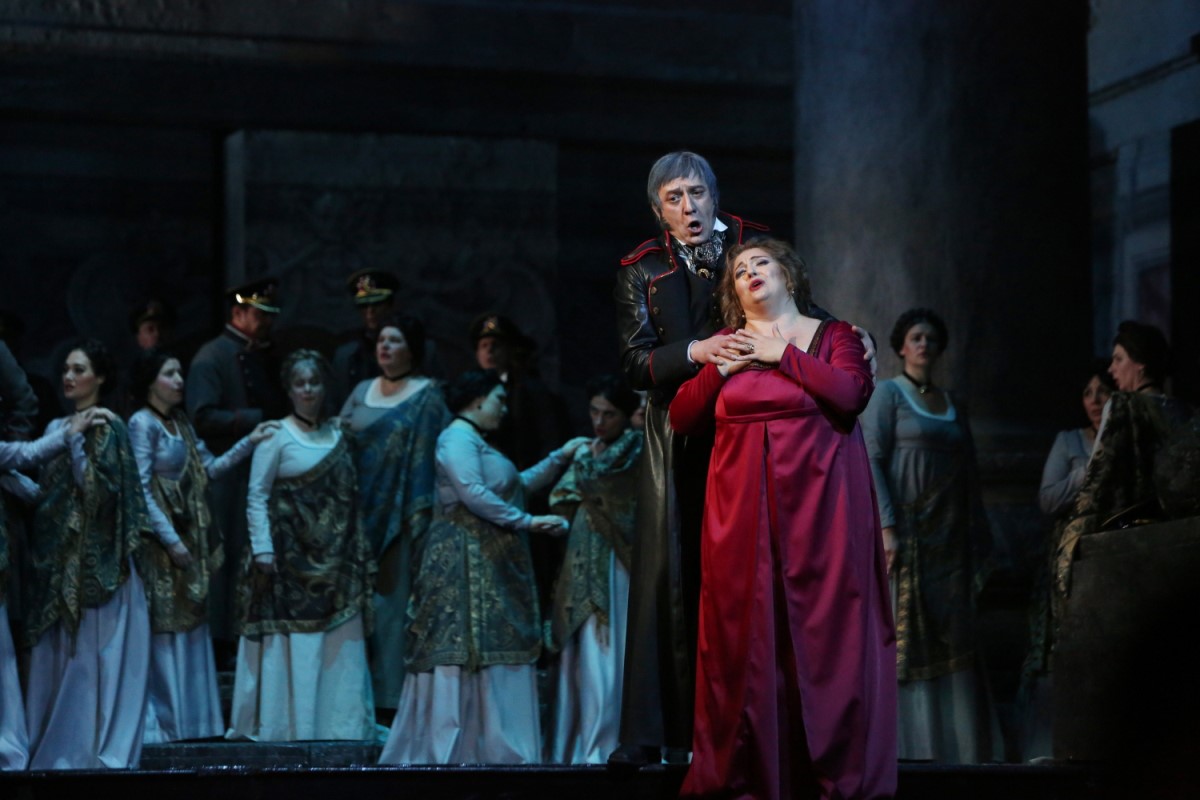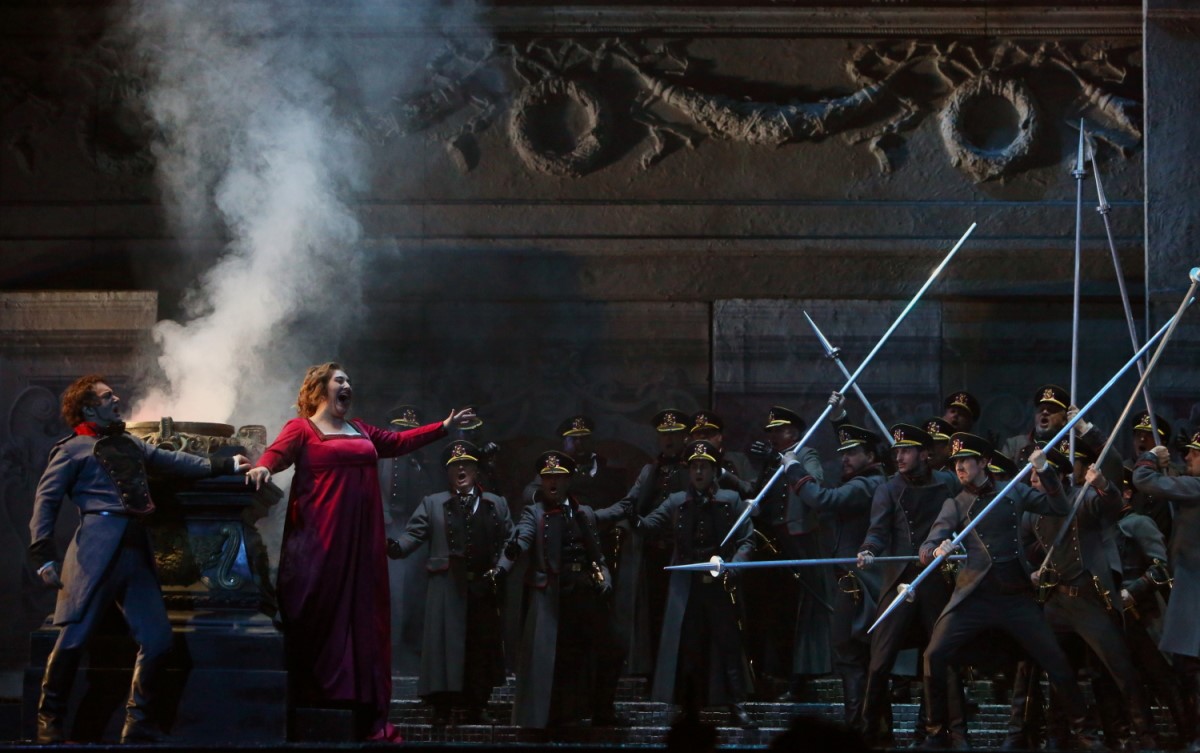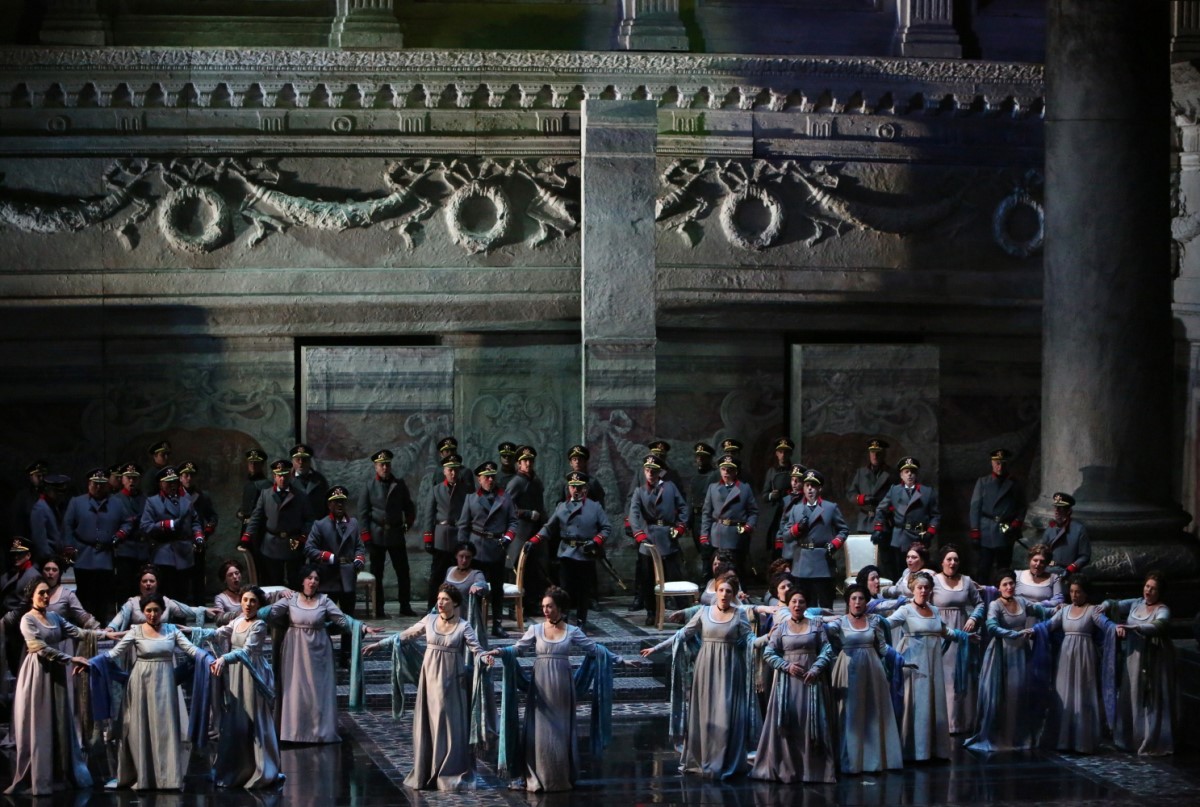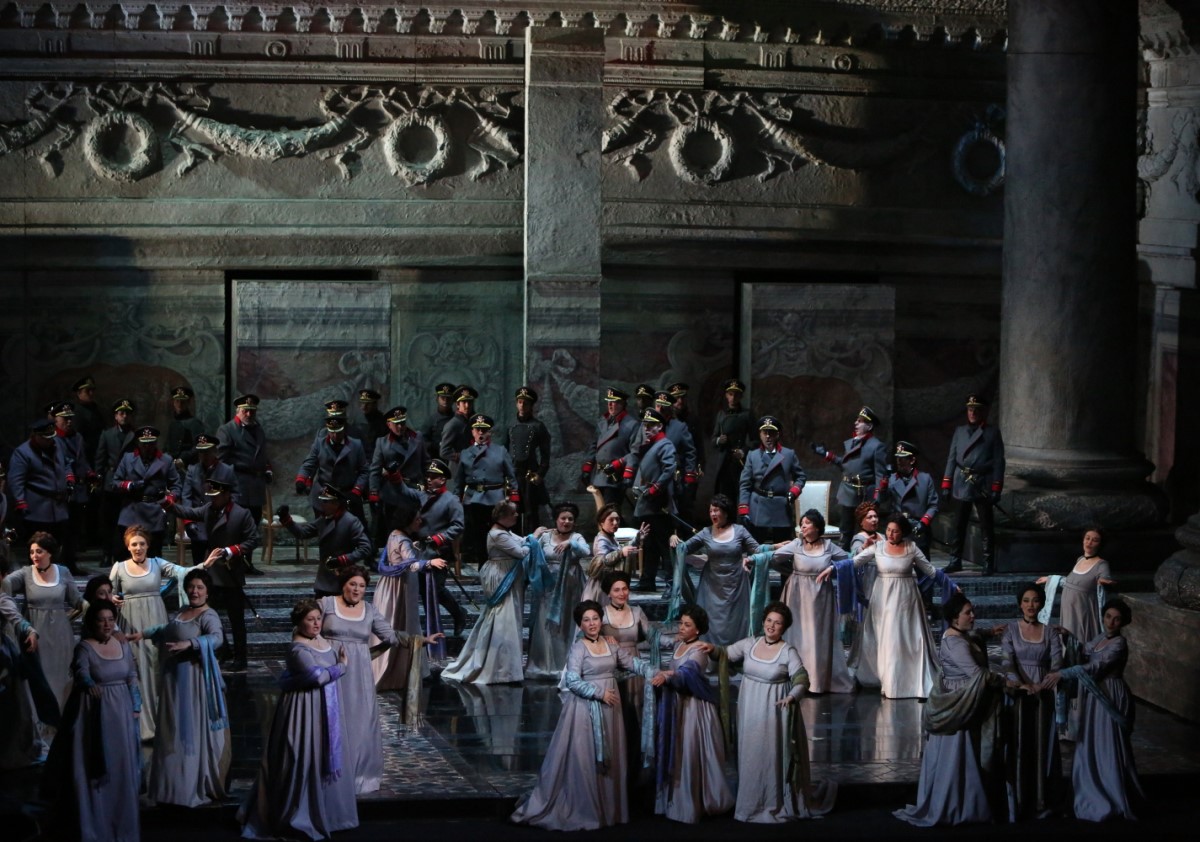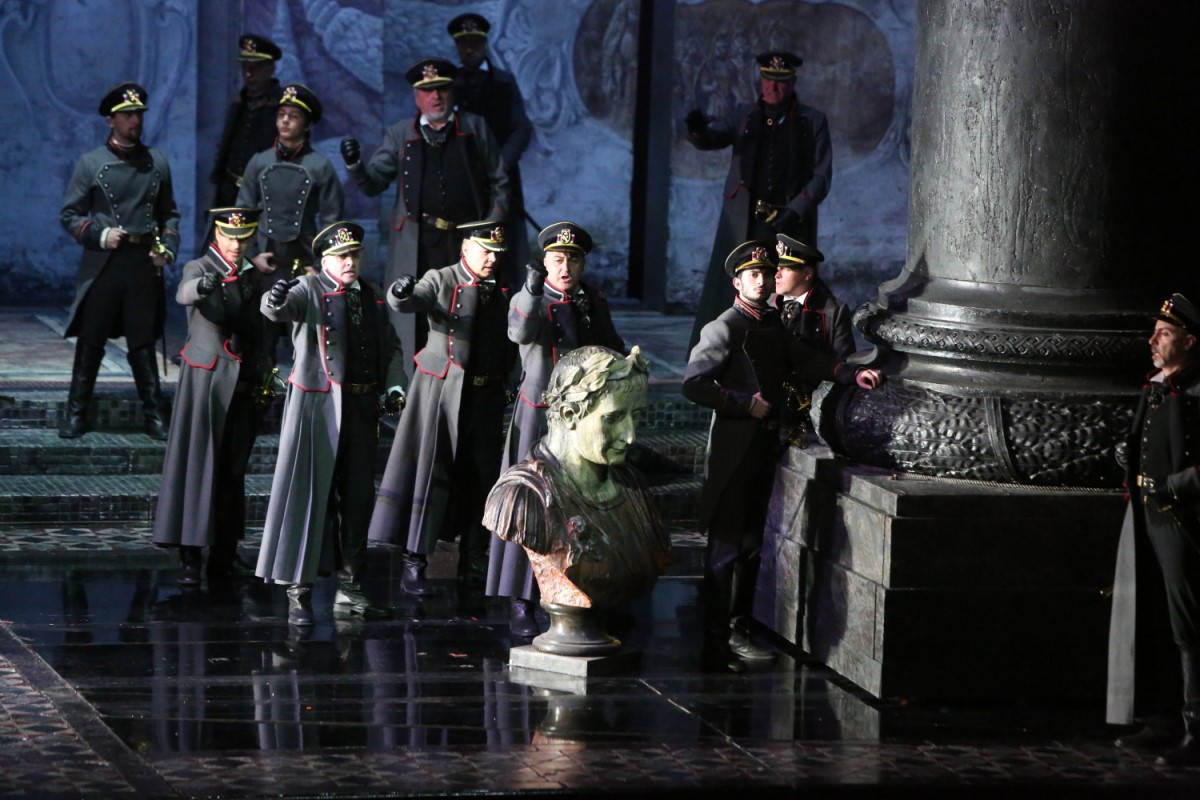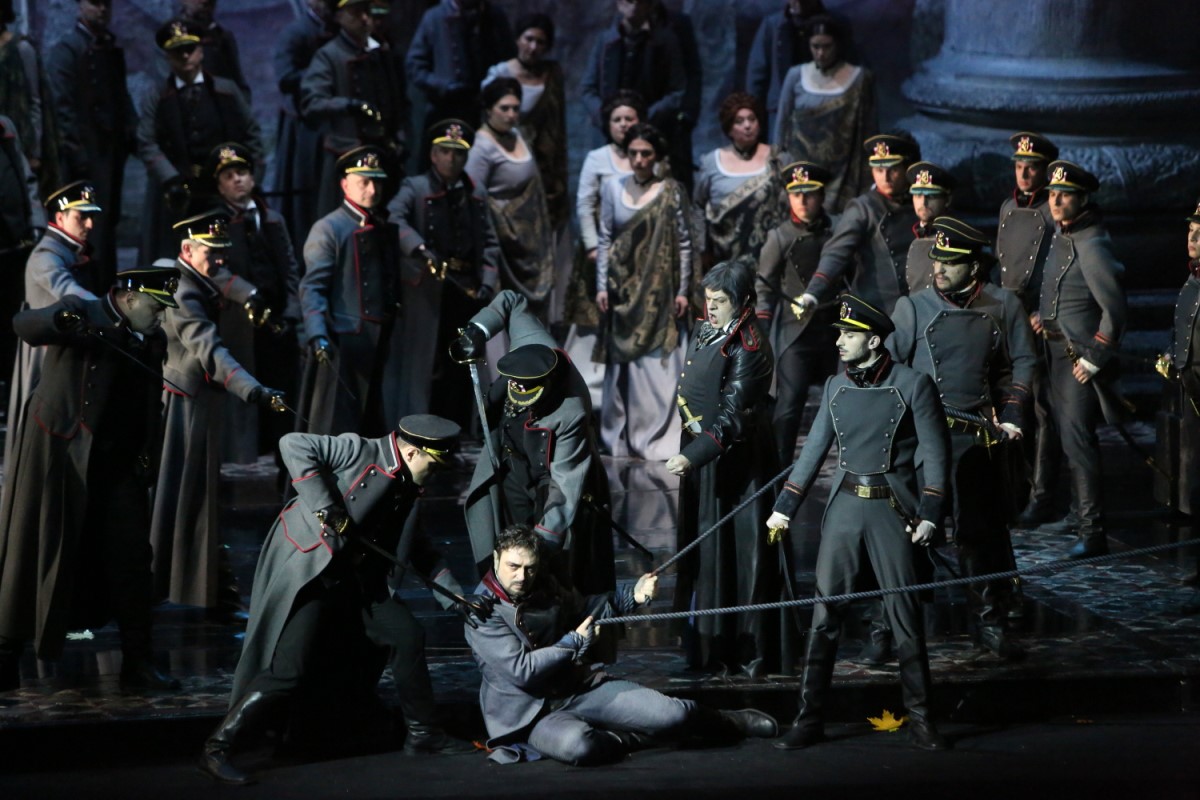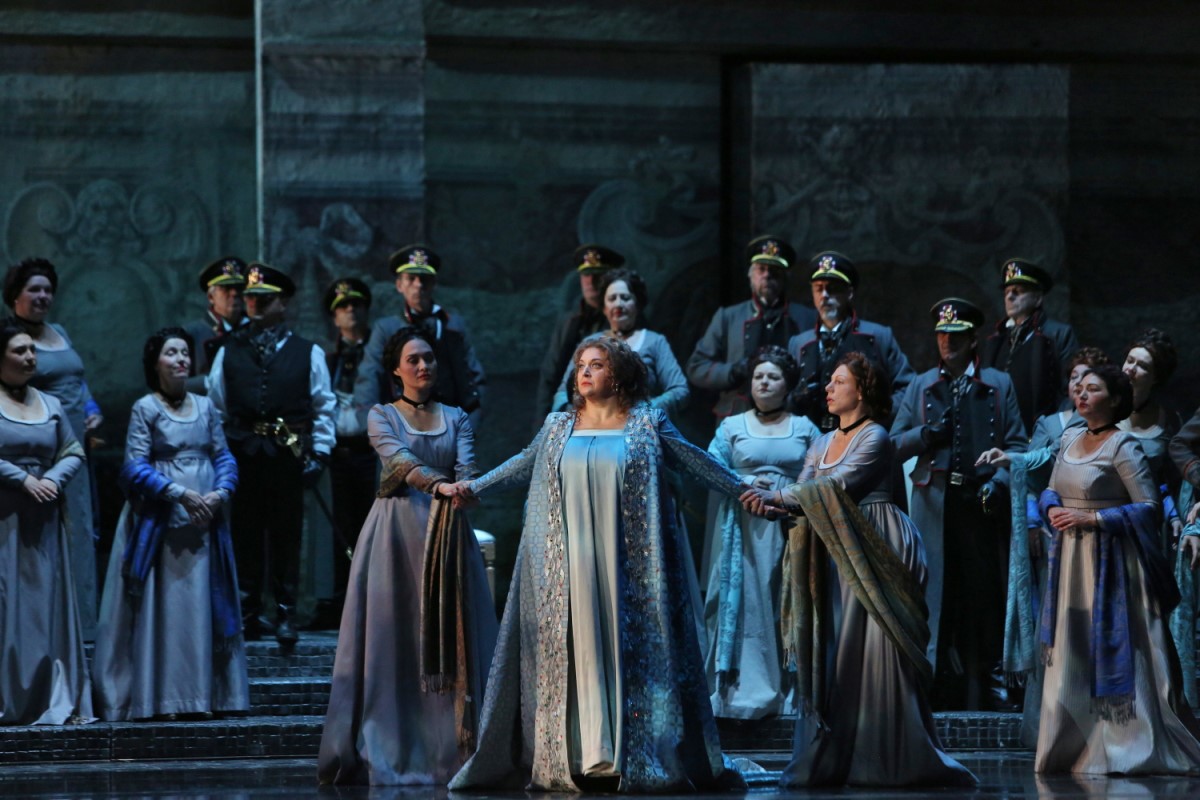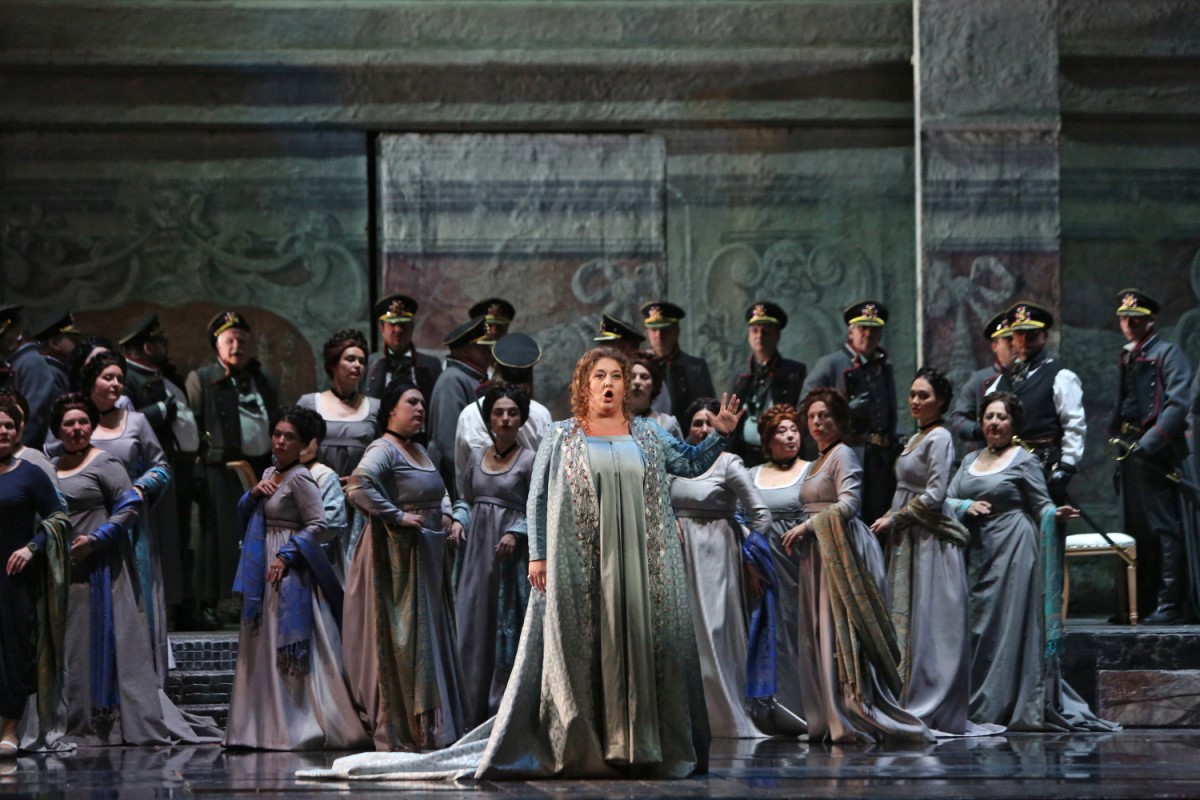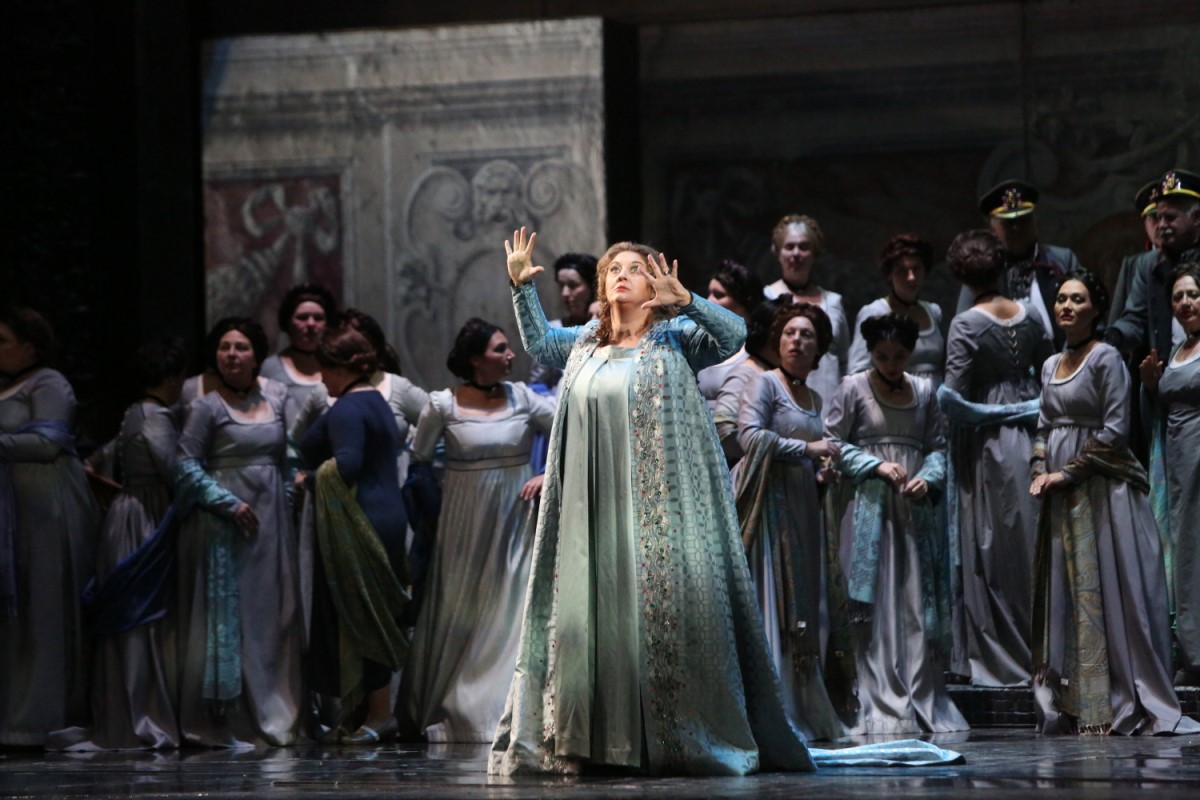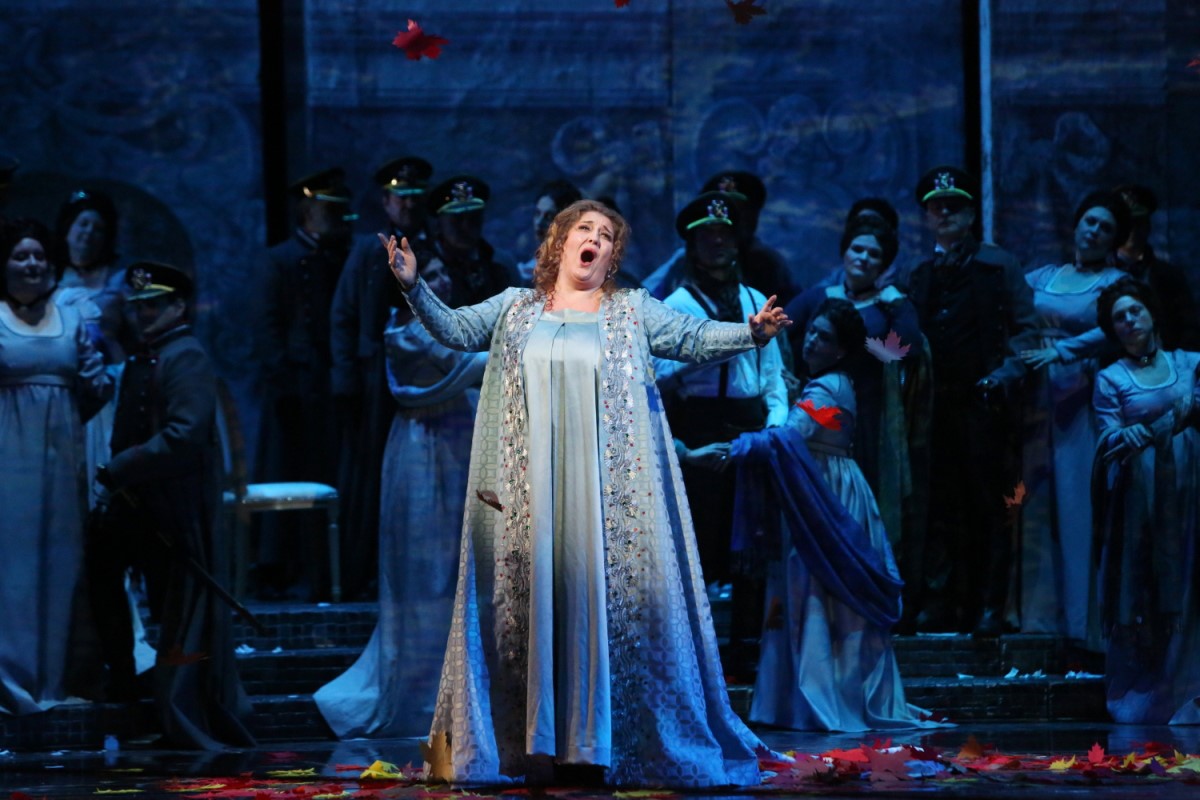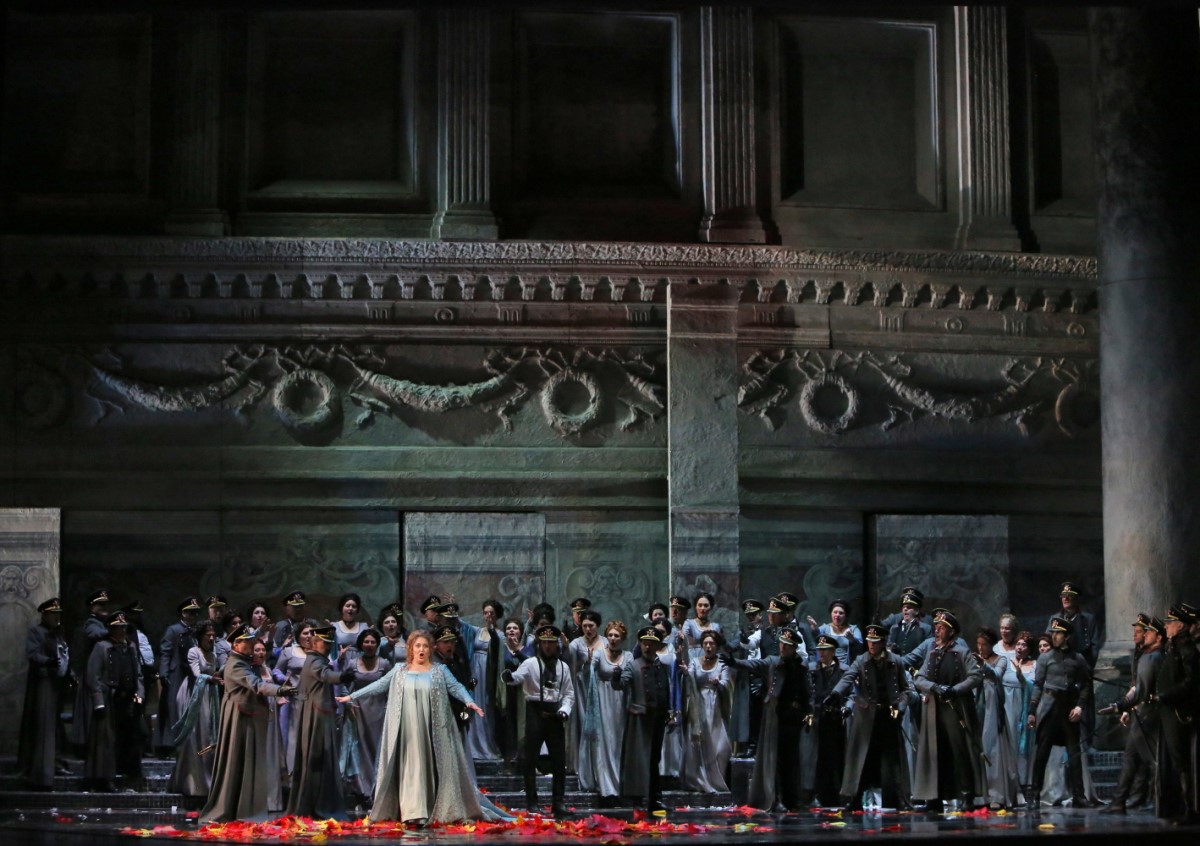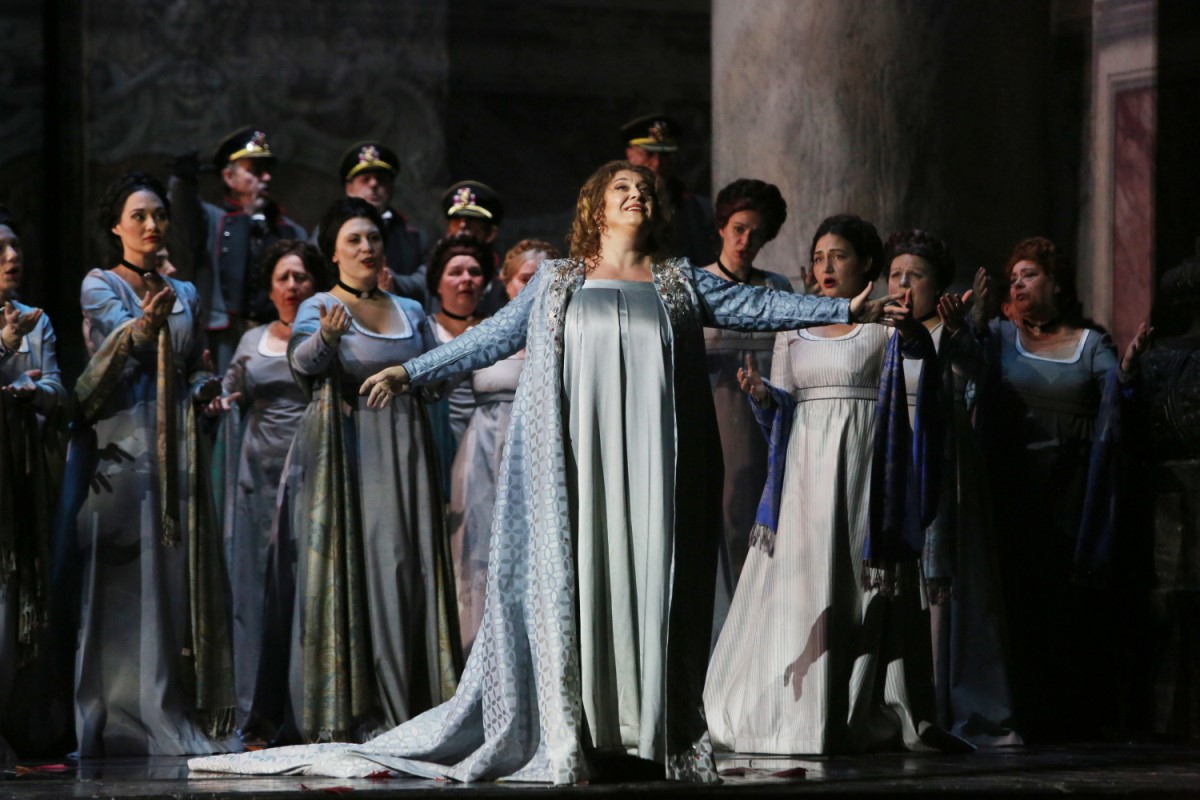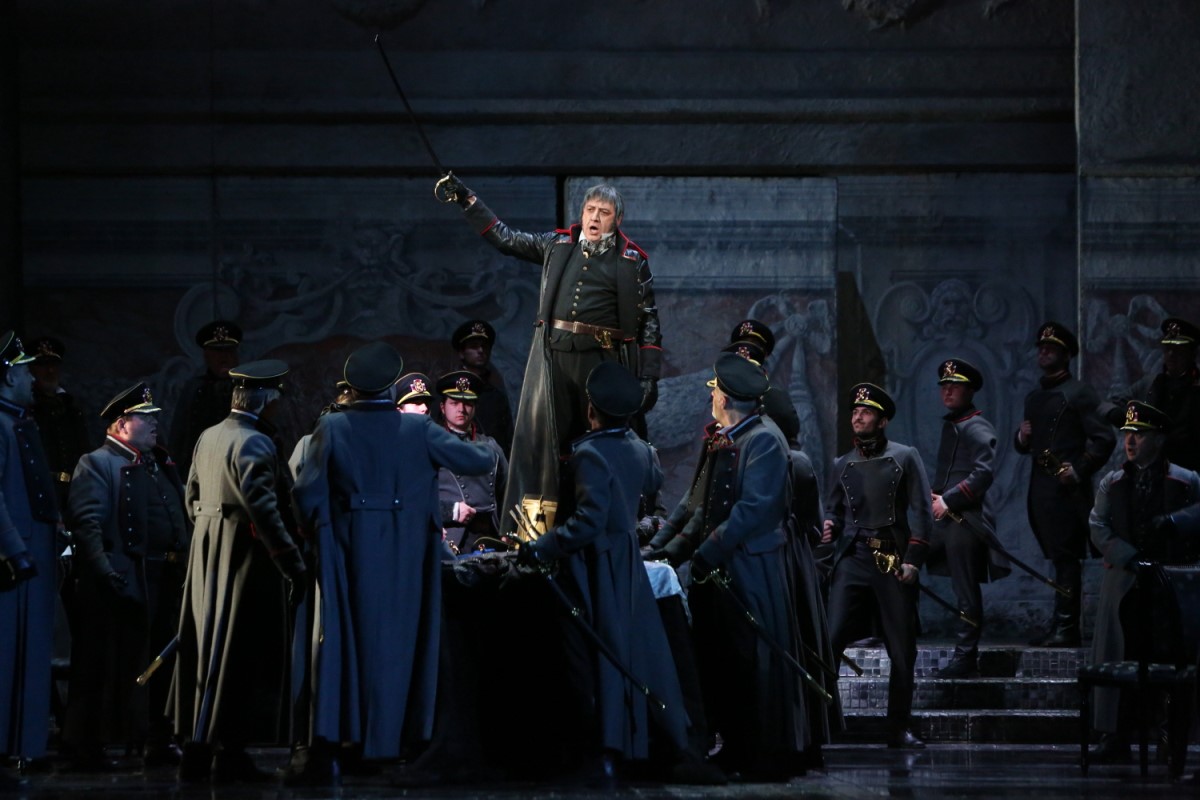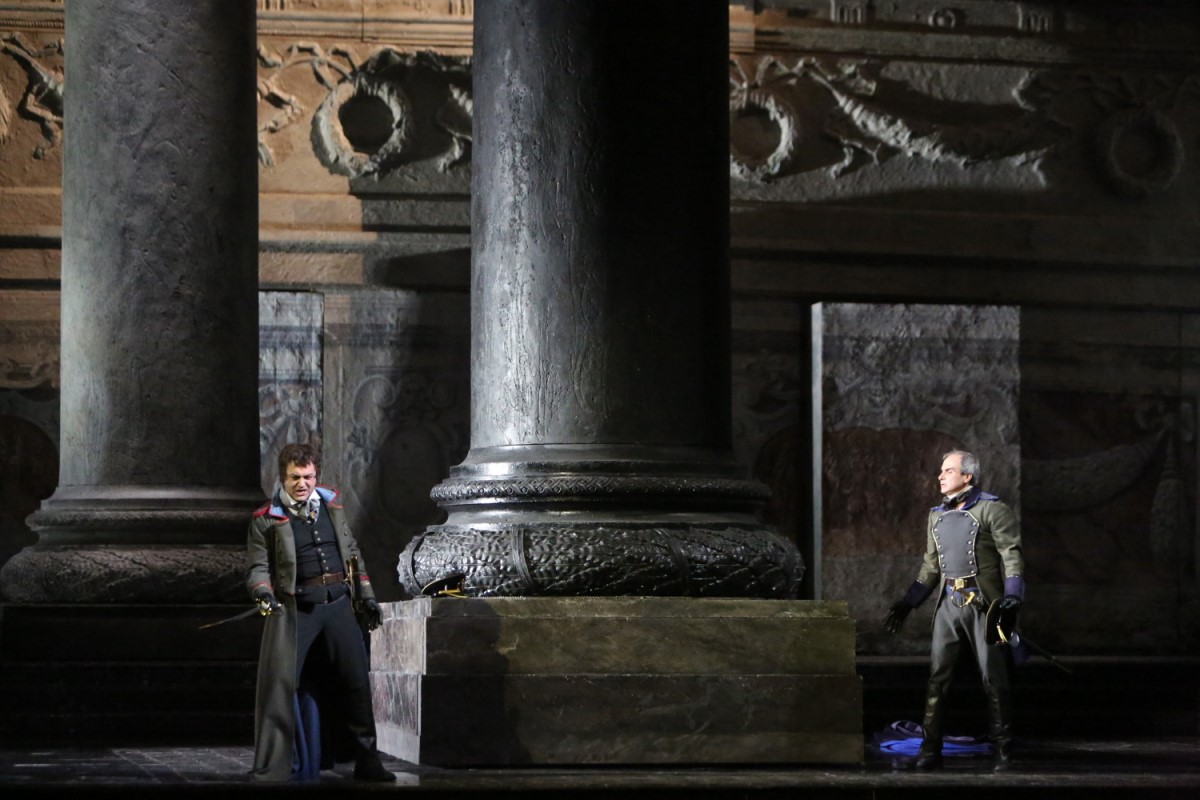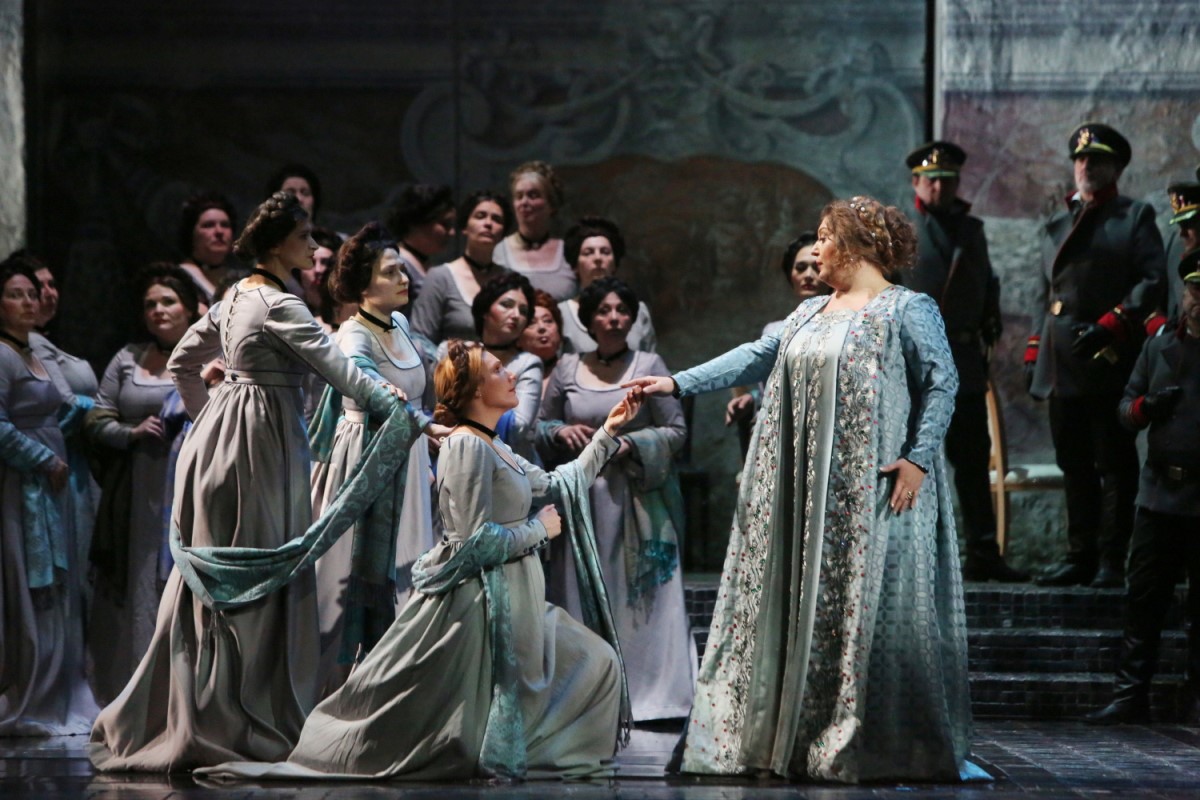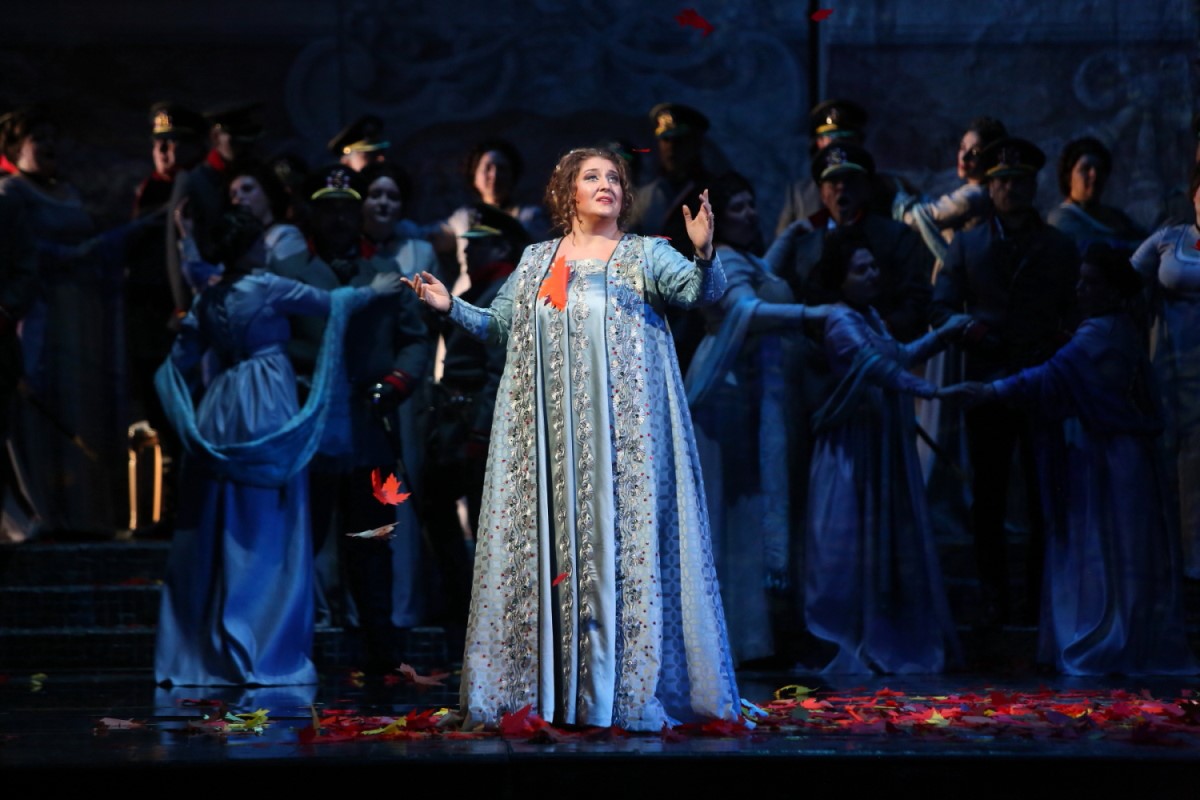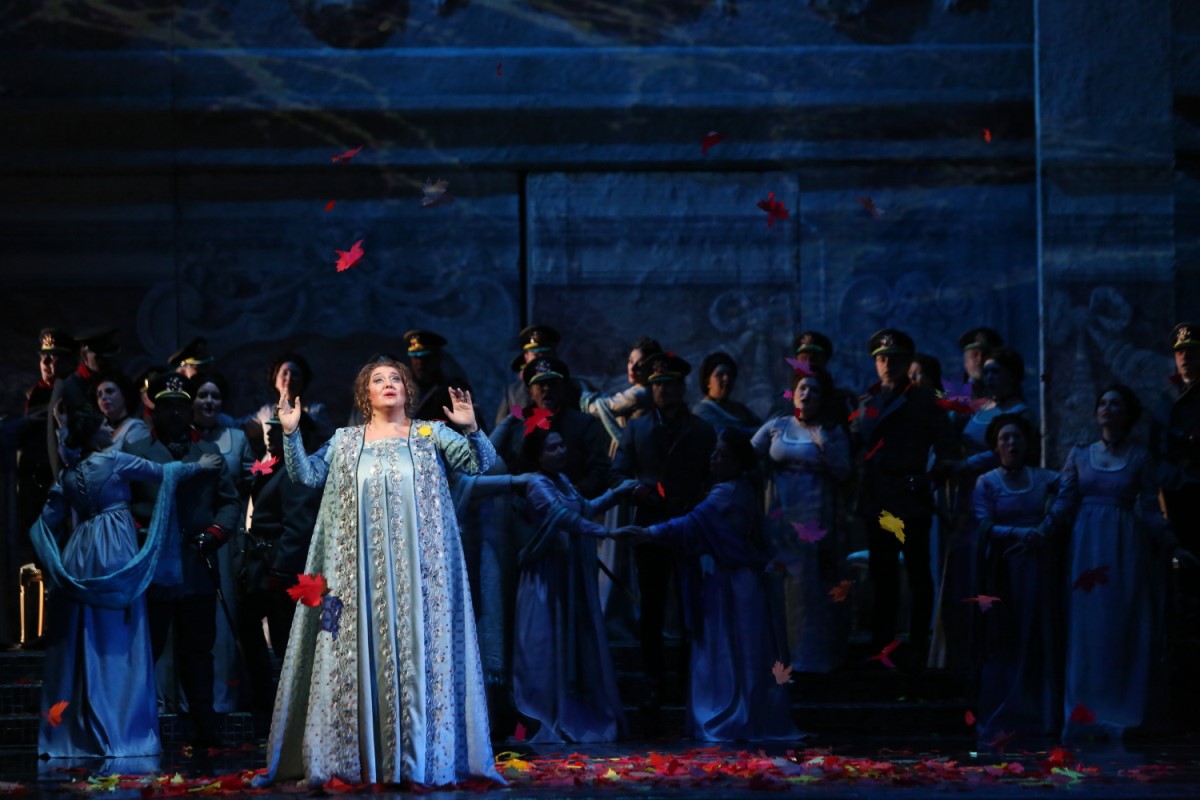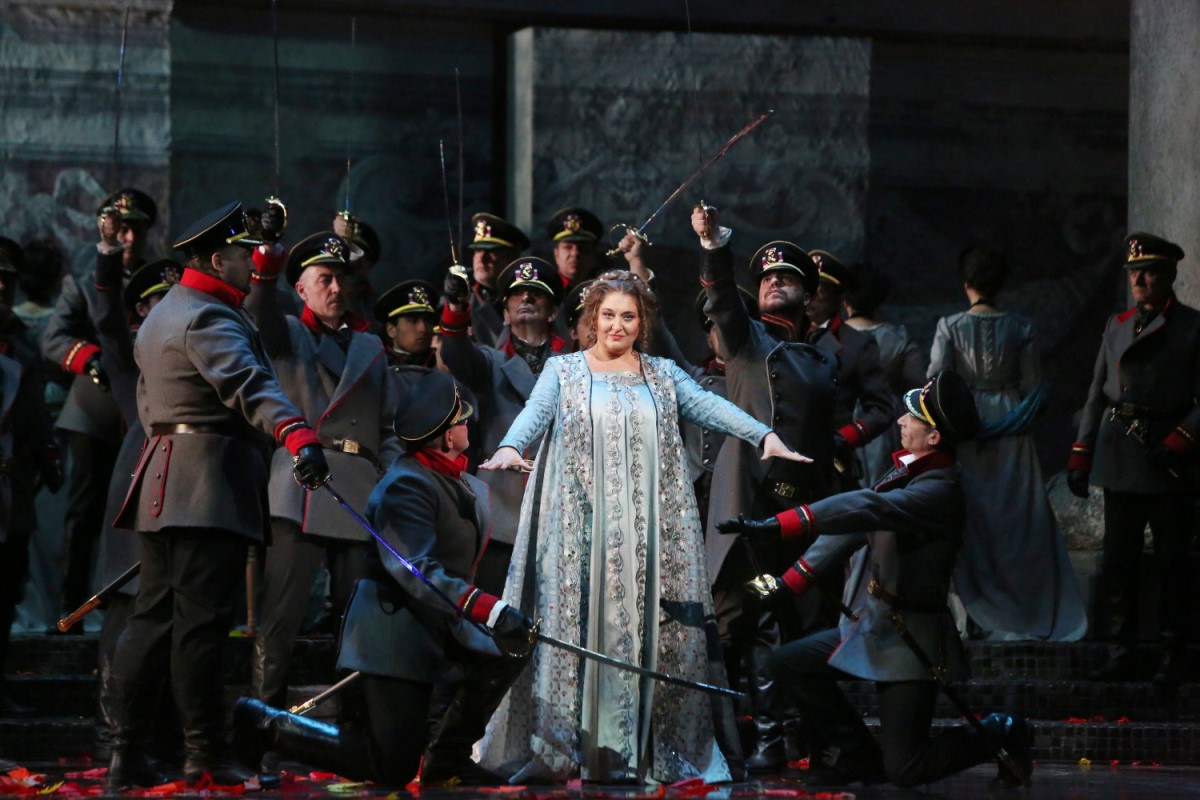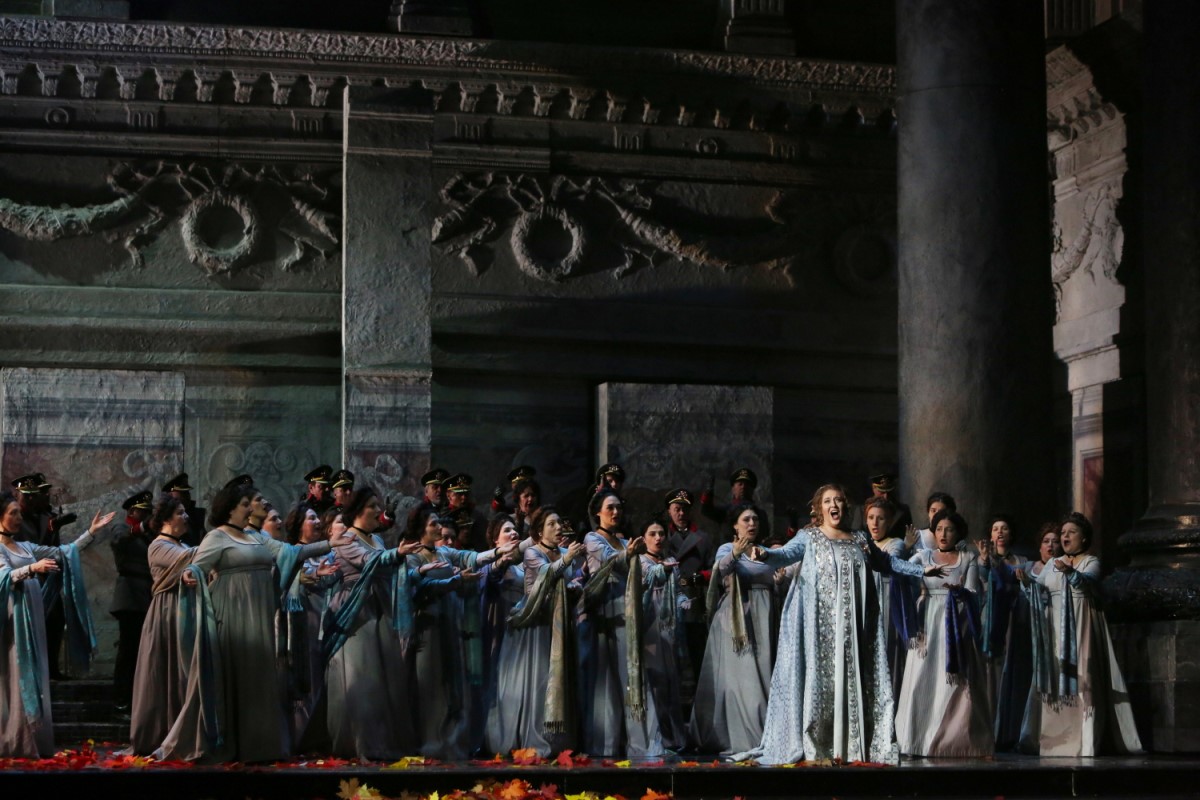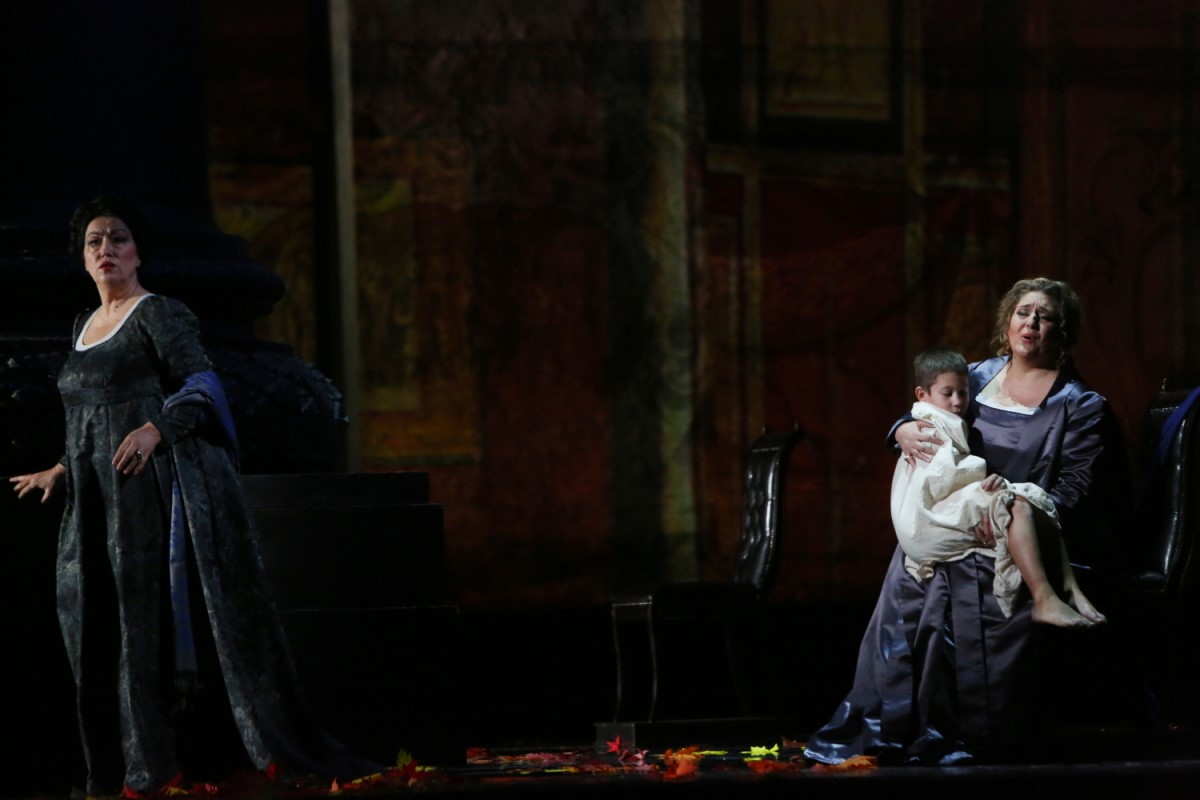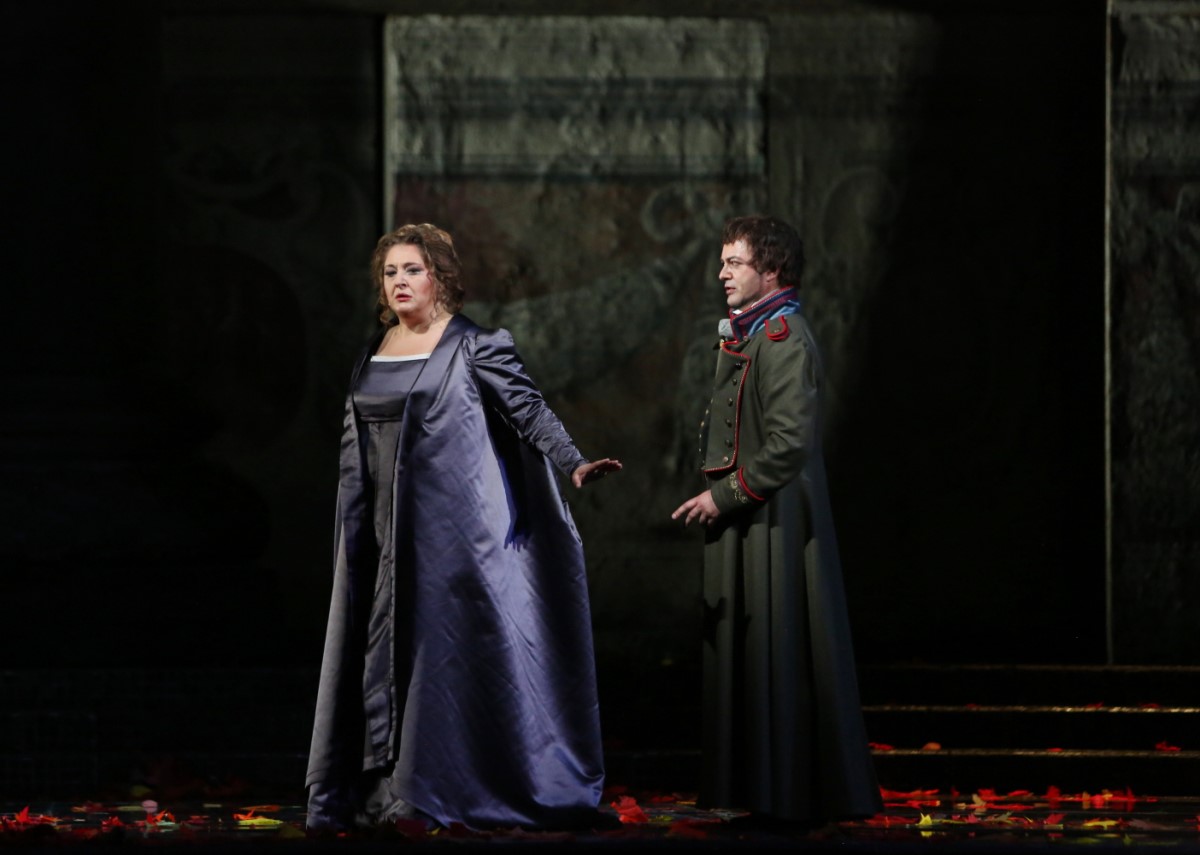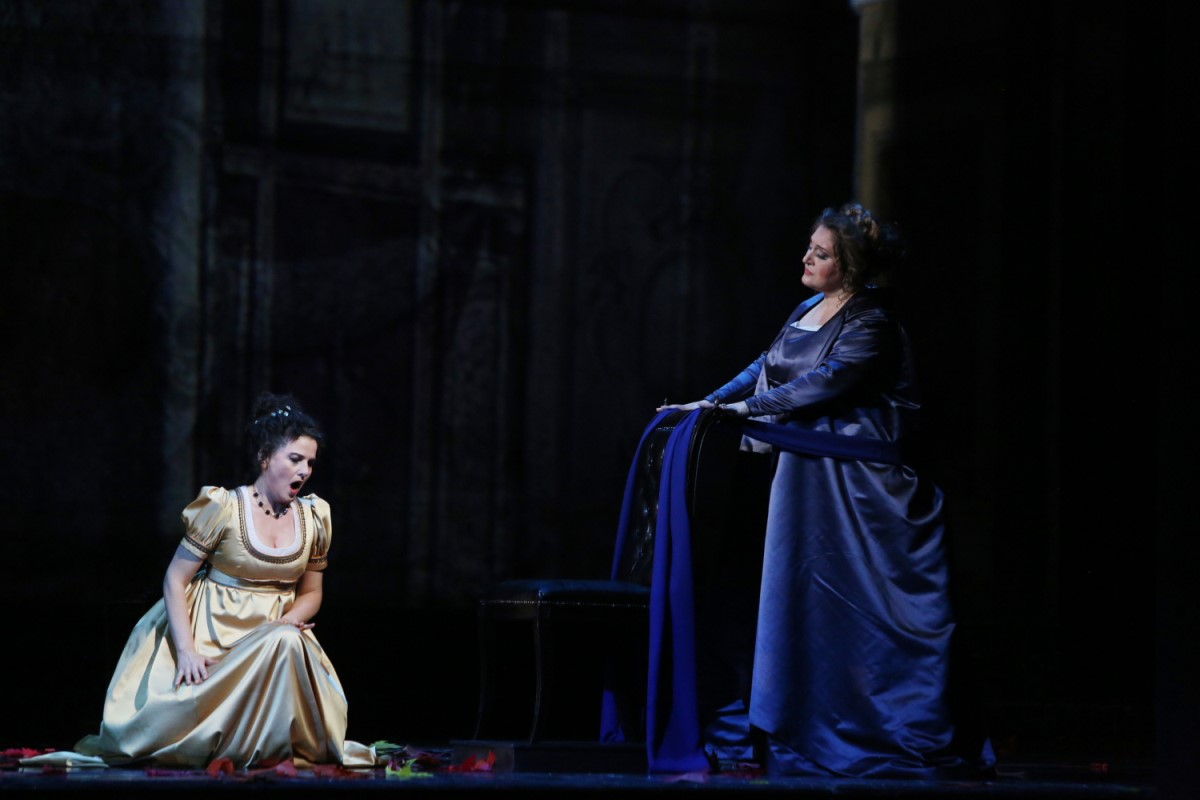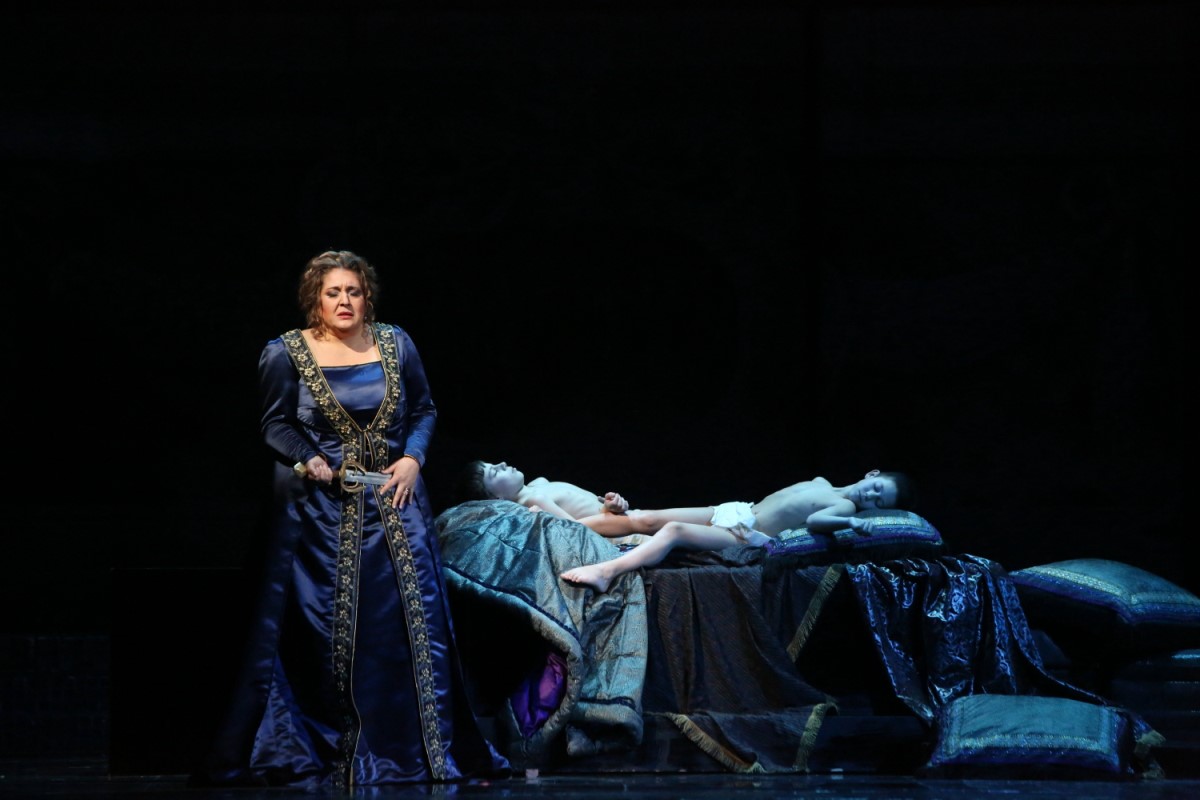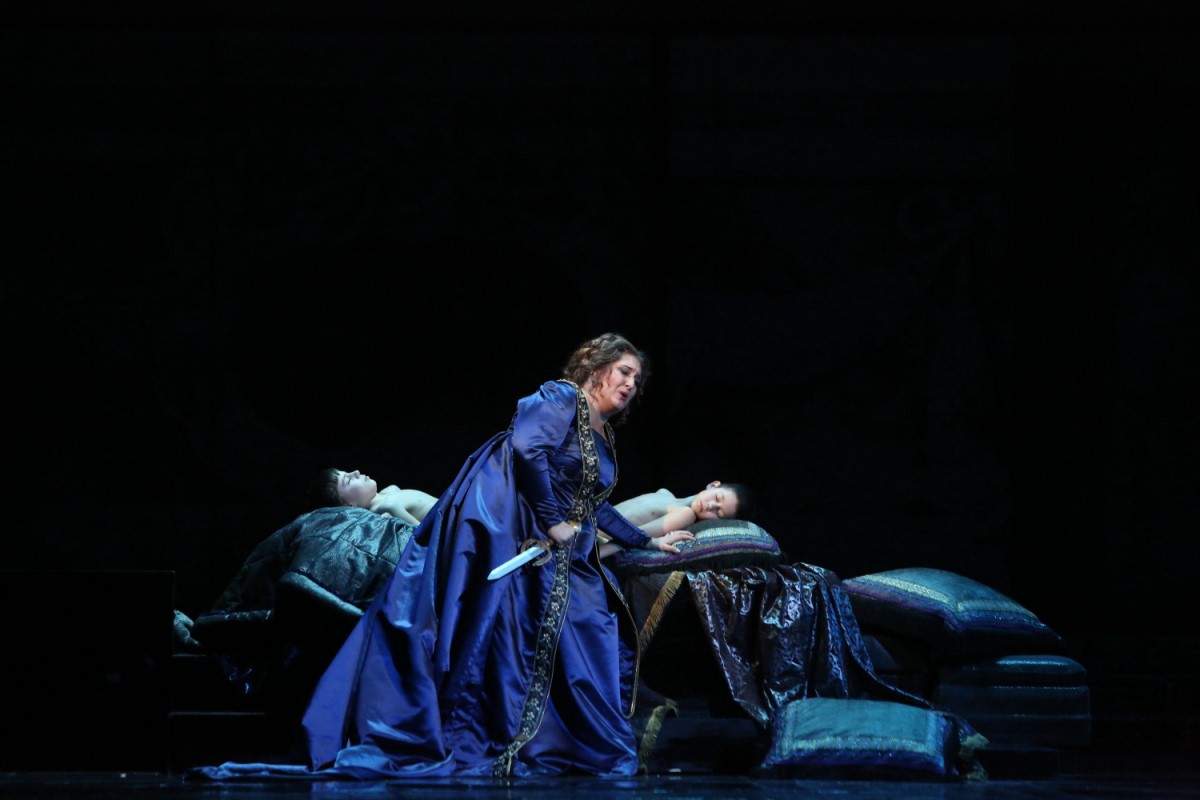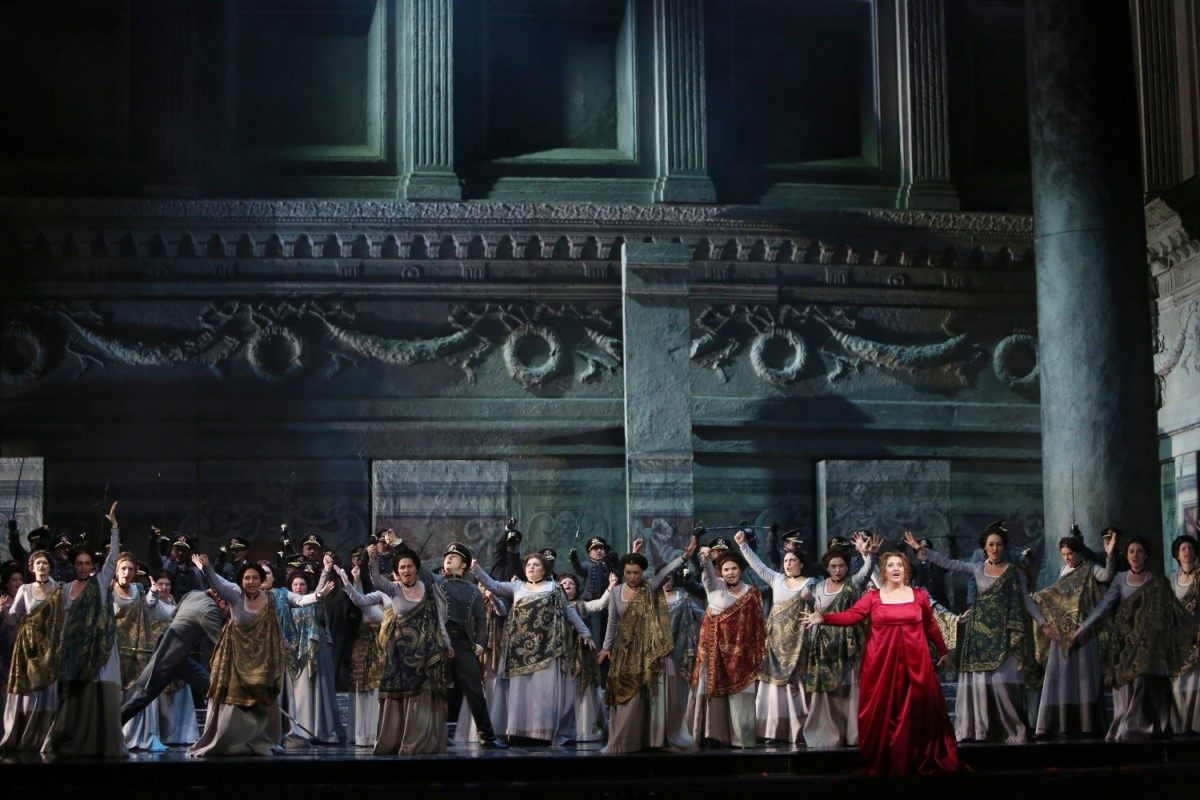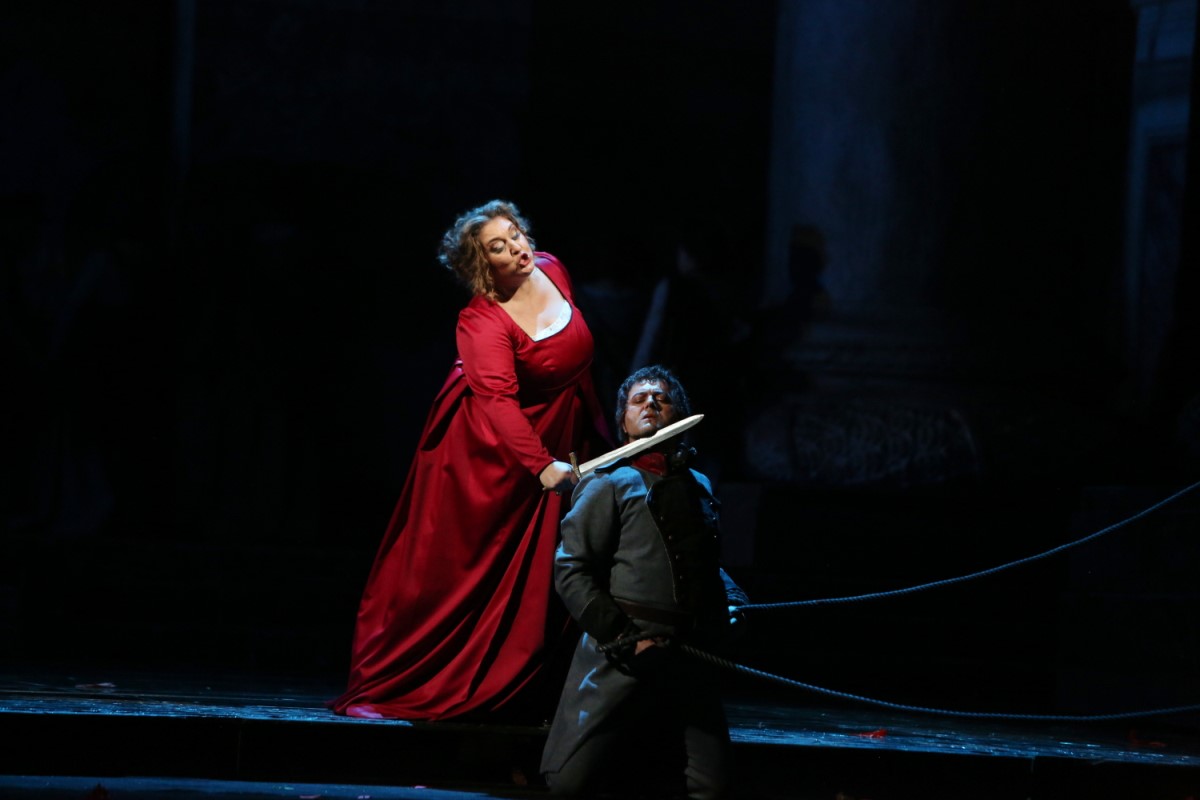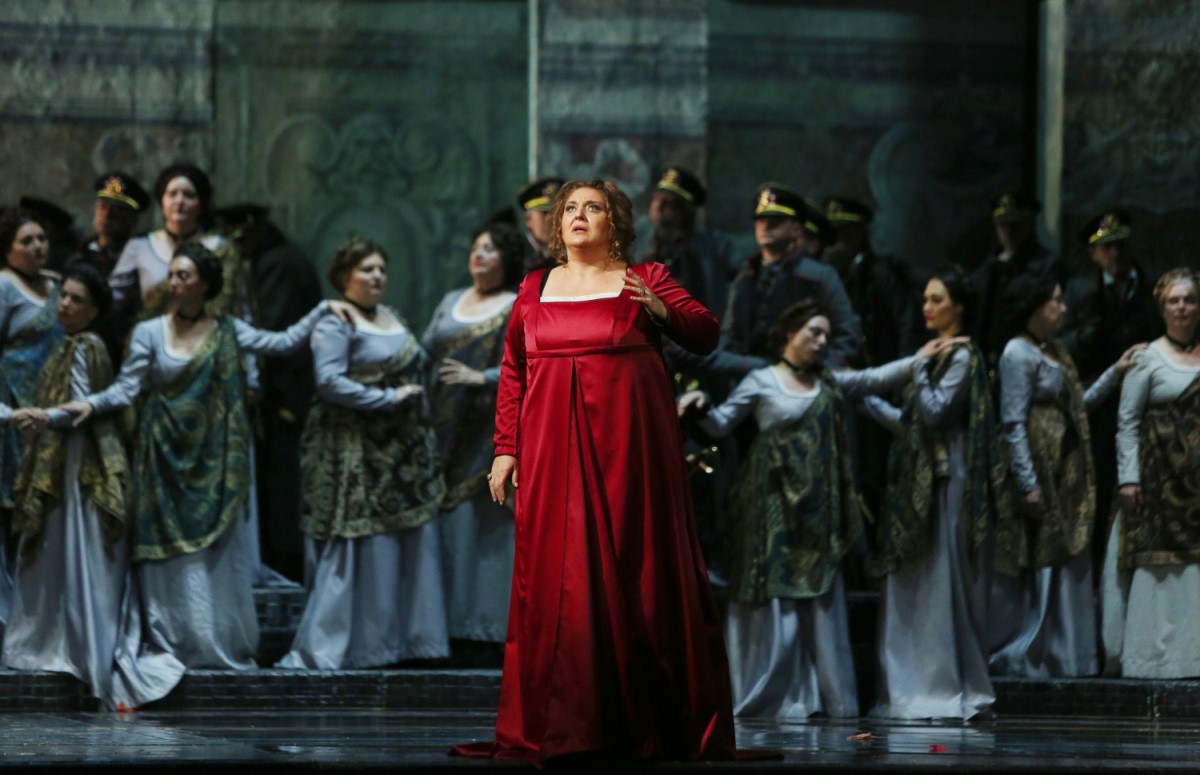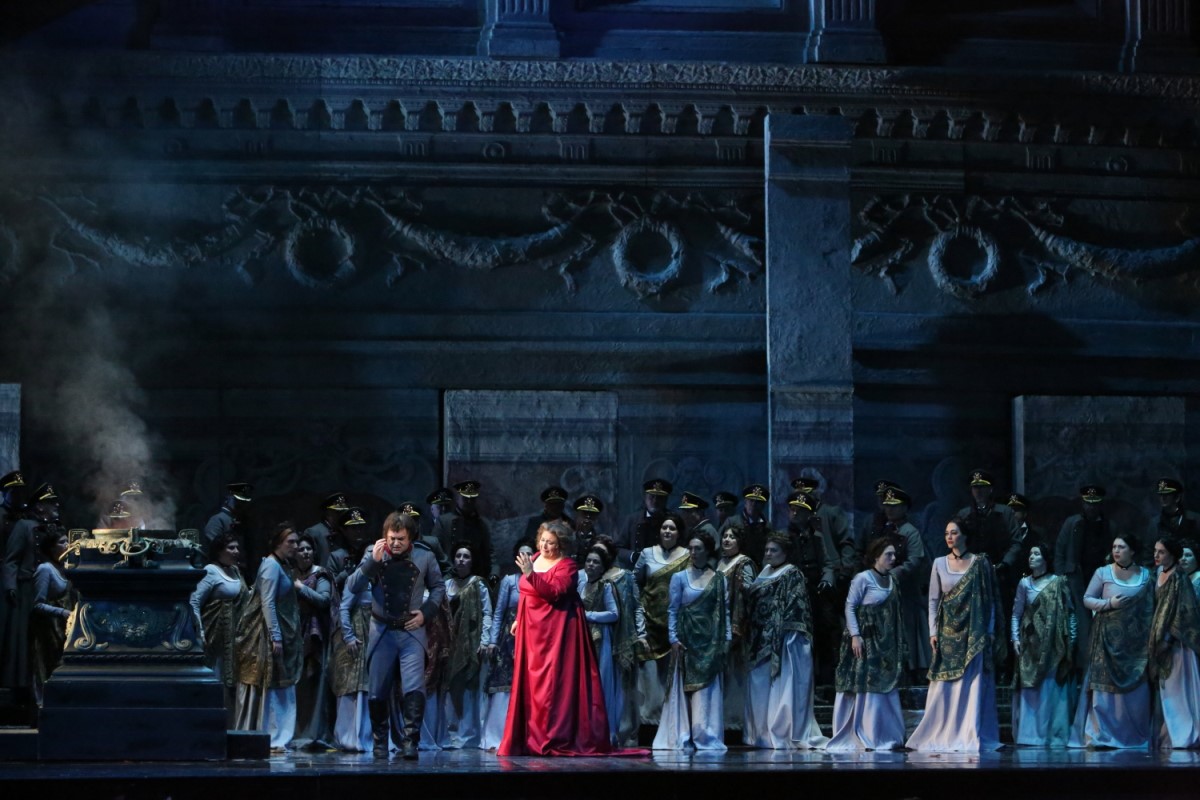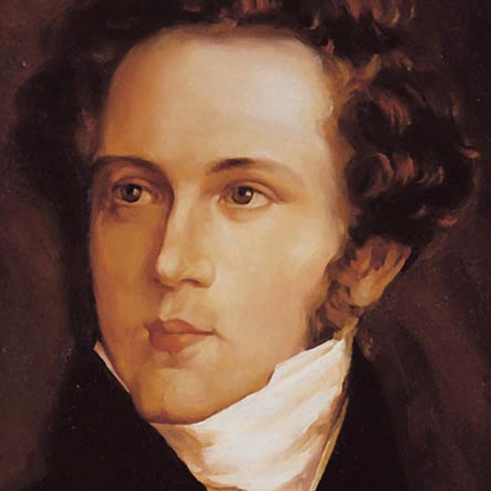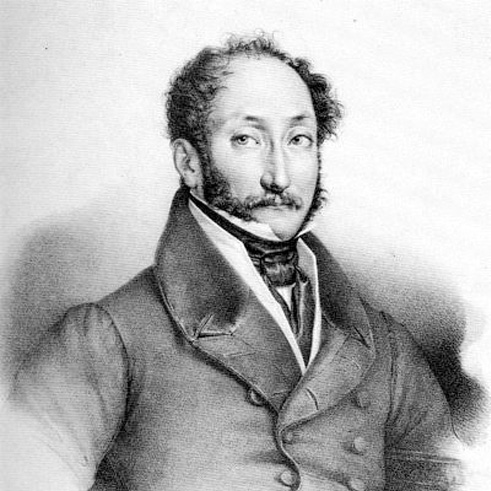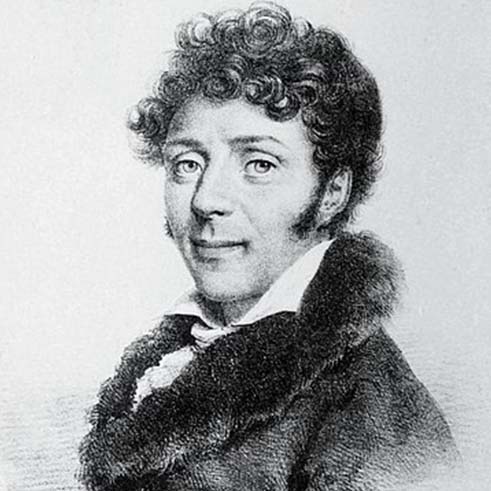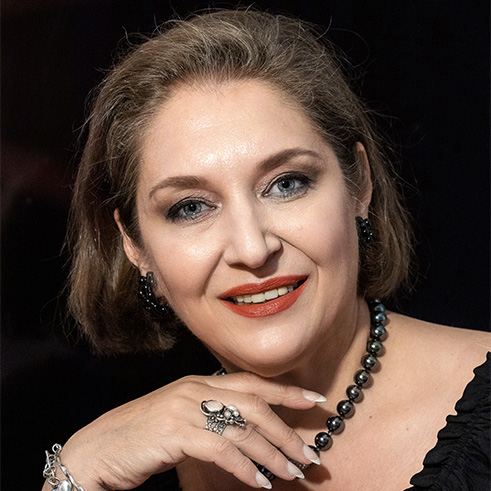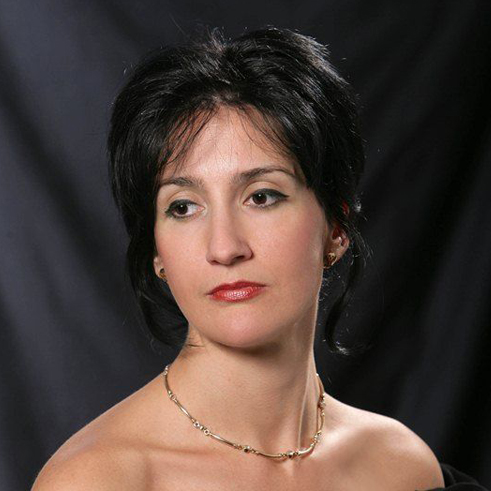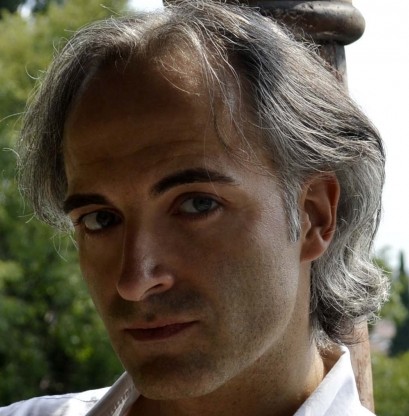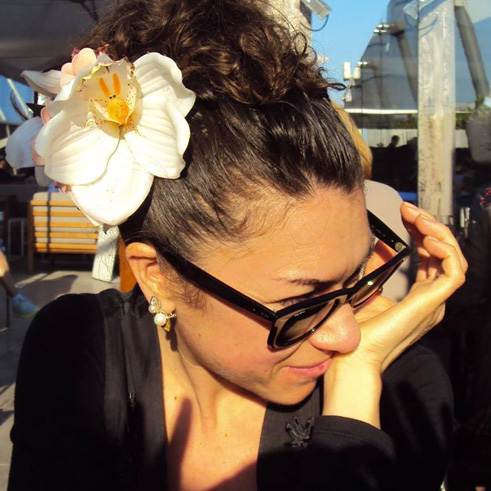NORMA
Opera by Vincenzo Bellini
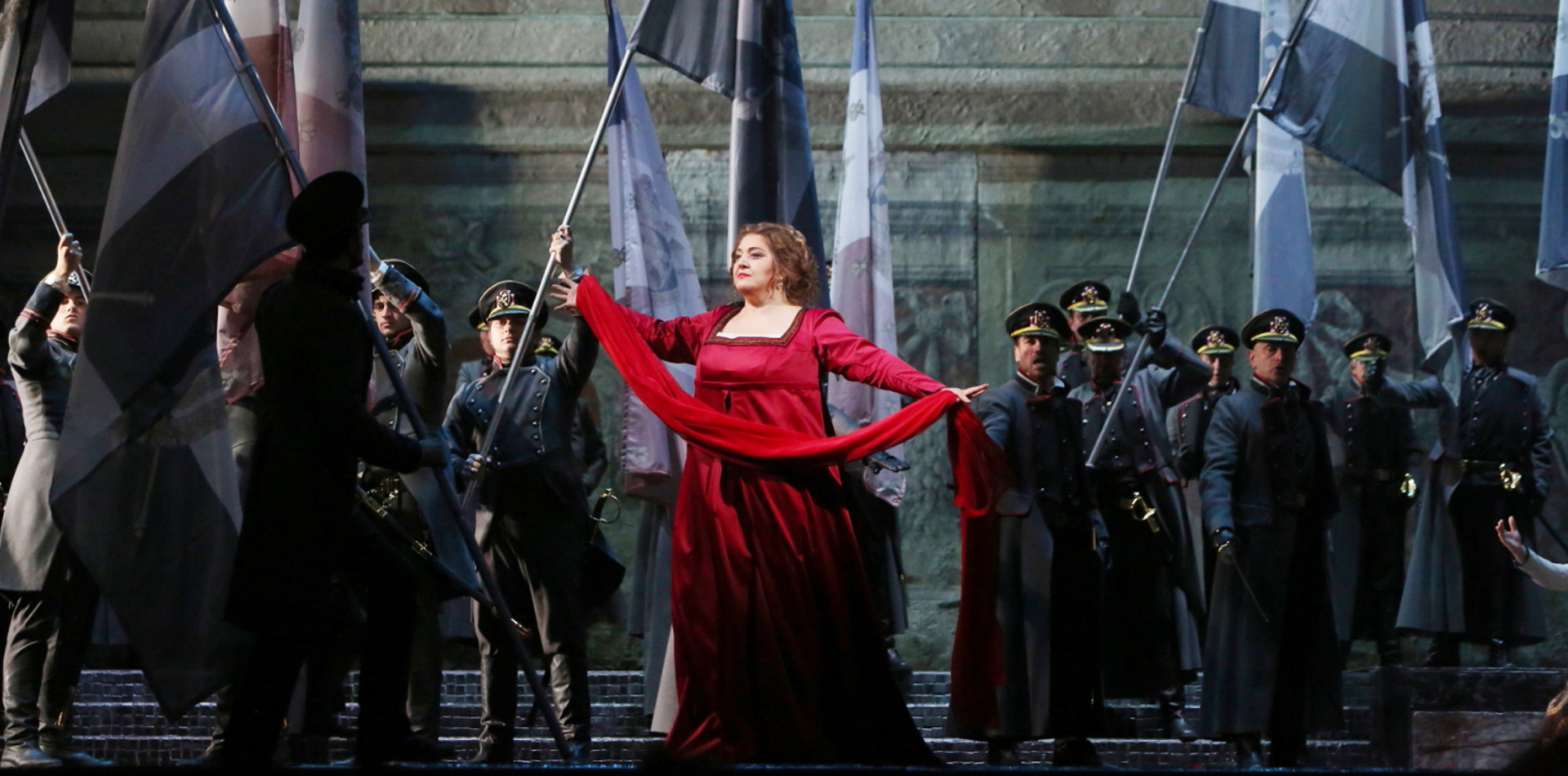
Preview
Norma: The Case for Bel Canto
One popular view of Vincenzo Bellini's Norma is that the title role is so outrageously difficult to sing that the opera has only survived, in the years since its première in 1831, as a vehicle for a few particularly endowed prime donne: Giuditta Pasta, Maria Malibran, Giulia Grisi (all three of whom Bellini heard before he died at thirty-three), Lilli Lehmann, Rosa Ponselle, and Maria Callas.
God knows it isn’t an easy part to sing, with its demanding mixture of vocal and emotional textures, its C’s above (some go for D’s) and B-flats below the staff, its long-breathed lines and octave drops and showpiece trills. One must be able to sing a strong, natural-sounding contralto and some of the highest coloratura ever written. The role of Norma calls for an authentic bel canto soprano voice, one that can be both mercurial-birdlike and witchy-dramatic.
Moreover, the dramatic challenge of this deep and complex part is at least as great as the musical. There is written into the role of Norma, Druid priestess and woman scorned, as much potential for dramatic excitement as into the roles of any of the great tragedy queens of Racine. It may well be that only the six sopranos I have just named have met both challenges at once, and have achieved something near to the full potential of this role.
In comparing critical descriptions made of all six of these Normas, what I found striking was the constant use, over a century and a quarter, of the same terms. Harold Rosenthal wrote, “The great Normas of operatic history have all been great singing actresses: mistresses of dramatic declamation and outstanding personalities—Lilli Lehmann, Rosa Ponselle, Maria Callas.”
“The singer,” remarked another critic, “must translate into musical phrase and cadence the emotions of a character under stress, as Pasta and Malibran did—and as Callas has done.”
Listening to Callas in Florence in 1952, a third critic wrote, “I realized what Stendhal and other chroniclers of the nineteenth century meant when they spoke of Malibran and Pasta.”
“We can well believe,” comments John Ardoin in The Callas Legacy , “that her balance between drama and agility came the closest in modern terms to those qualities of Giuditta Pasta.”
Of every one of the six (except perhaps Ponselle), it was acknowledged that the vocal instrument itself could be impure, even unbeautiful, but that the singer converted this sometimes steely edge into operatic gold by her range, control, and agility; by musical intelligence, accuracy, and style; and by theatrical presence and histrionic skill.
In 1856, Paul Scudo said, “Beautiful, intelligent, and passionate, Pasta made up for the imperfections of her vocal organ by means of incessant work, and a noble, tender, knowing style. An actress of the first rank, she submitted each breath to the control of an impeccable taste, and never left a single note to chance.”
Stendhal, a passionate admirer (and personal friend) of Giuditta Pasta, admitted that she had a voice made up of three distinct ranges—“not all molded from the same metal, as they say in Italy; but the fundamental variety of tone produced by a single voice affords one of the richest veins of musical expression which the artistry of a great soprano is able to exploit.”
“From the start,” concludes Sergio Segalini, “her limitations were obvious; but by dint of sheer effort, Giuditta Pasta forged all extremely accomplished technique that allowed her to become the ideal interpreter for Bellini. She was never able to give to her voice the exquisite beauty of a Maria Malibran, but she learned how to bring an infinite variety of vocal colors to her interpretations.”
Most of the great Normas began as mezzos, or even Wagnerians, and then channeled that power into bel canto. Lilli Lehmann and Maria Callas were perhaps the only two sopranos in history who could sing well both Norma and Brünnhilde, sometimes two or three nights apart—a feat comparable, someone once wrote, to winning gold medals in both weightlifting and the hundred-yard dash. (Lehmann insisted that she would rather sing three Brünnhildes than a single Norma.)
All six worked at their craft with demon-driven intensity. Lehmann would sing each phrase through hundreds of times in practice, go through an act three or four times running. Callas did the whole “Casta diva” nine times in one rehearsal for her American première. Each of the six applied extraordinary intelligence to her analysis and creation of the role. “It should be sung and acted with fanatical consecration,” declared Lehmann. Each was able to electrify audiences by her mere presence on a stage.
Each of these Normas is called “hypnotic,” “riveting,” “electrifying,” “unforgettable”; each is described as having exact pitch and control; each is praised for recitatives and fioriture sung expressively; each is called a genius of dramatic gesture and timing.
Time’s critic wrote after Callas’s 1954 Norma in Chicago: “She may not have the most beautiful voice in the world, but she certainly is the most exciting singer.” “I am enthralled,” wrote Harold Rosenthal of Callas’s 1957 London Norma, “when she is onstage. Opera is more than singing; it is music drama; and Callas' Norma is a dramatic creation of the highest order. . . . We will tell our children and grandchildren about it."
This role has never died out in Italy. There, the provincial and major houses have kept Norma in the repertory since its early nineteenth-century première: one Italian critic has listed twenty-three Normas worthy of note between Pasta and Callas.
More than ten years ago, Andrew Porter unearthed forty-seven different recordings of “Casta diva,” Norma’s famous first-act prayer: two verses of heartbreakingly beautiful melody over simple string arpeggios and a solo flute, which soar weightlessly in long curves around the key of F, then spill over into wild, repeated trills.
The cavatina climaxes in two series of fortissimo high A’s, leaping up to B-flat and then trickling rapidly down. It is gorgeous, it is touching, it is fiendishly demanding. It can be made to correspond precisely to the secret inner pain and confusion of the traitor/priestess, poignantly pleading with the moon-goddess to temper the audacious zeal and ardent hearts of her people.
And it seems that every soprano in sight wanted to prove that she could sing it. The most noteworthy of the present generation have been three divas gifted at coloratura, if not at compelling dramatic recreations: Joan Sutherland, Beverly Sills and Montserrat Caballé, the most nearly satisfactory of the three.
As for the orchestration, I think Bellini was more knowing and dramatically skillful than Verdi gave him credit for. Things most operagoers feel rather than recognize, such as tonal shifts, silences, and suspensions, were worked out as carefully as the more obviously expressive gestures—violins allegro agitato or creepy-crawly low strings to hint of danger; repeated notes to signify inner agitation; tender love lyrics easing out of crashing chords; a full palette of woodwind colors. Some of the orchestral interludes (listen to the poignant, three-theme D-minor prelude to Act II) are seductive and appropriate, and the singers’ line is usually deftly underscored by the musicians’.
“Casta diva”, best remembered for its long-breathed, floating, rising-and-falling legato, would lose half its meaning without the coloratura outburst with which it concludes. Of Norma’s violent attack on Pollione (“Ah, non tremare”), Brunel comments, “Norma’s extreme vehemence, transformed into sheer fury, expresses itself by means of her fioriture”. The three diabolically difficult low trills—E-flat, G-flat, B-flat—that Norma has to sing in Act II (con furore) on the accented dotted quarter notes of “A-dal-gi -sa fia punita” (Adalgisa will be punished) are the physical manifestation of her unbearable internal rage. The unaccented syllables here are sung to doubled sixteenth notes; after a fourth trill on the tonic B-flat, she leaps to a rapid run (up to A) above and down the staff to complete the dire and vengeful sentence: “Nel -le fiamme perirà”, (She will perish in the flames).
Even Wagner recognized this quality in Bellini. “They think me an ogre in all that concerns the musical school of Italy”, he wrote in 1837, “and they set me up in especial opposition to Bellini. No, no, a thousand times no! Bellini is one of my favorites, because his music is all heart, deeply felt, closely and intimately bound up with the words”.
Wagner had conducted Norma at Magdeburg in 1835, and at Riga in 1837, making additions to and changes in the orchestration. At Paris in 1839, he wrote a new aria (never used) for Oroveso to sing. In 1880, the conductor Anton Seidl wrote that after playing him some melodies from Norma on the piano, Wagner had remarked, “There is real passion and feeling here. It only needs to be sung by the right singer to make a deeply moving effect”.
In addition to being the most vocally demanding and physically strenuous female role in Italian opera (“the Isolde of La Scala”), the character of Norma encompasses a psychological encyclopedia of emotions. Our singer-actress must make credible a virtually unbroken gamut of violent emotional changes, until the moment when she beats the sacred shield, announces her own guilt, and, shrouded in black, marches into her own funeral pyre. Surely she is, as Pollione at last comes to realize, a sublime donna.
In Opera, or the Undoing of Women, Catherine Clément argues that this spellbinding vocal phenomenon—the human voice at its most beautiful, its potentially most expressive—has too often been “wasted” on weak, pliable, long-suffering heroines. Most of the female characters in opera are seen by her as the creatures of crude and cruel male librettists and composers who were simply converting their or their cultures’ male-chauvinist fantasies into operas. According to Hélène Seydoux’s view, male artists, secretly frustrated by their cultural obligation to “act like men” – when what they really wanted to do was cry – express their female inner selves, through their suffering heroines.
But can one honestly say that of Norma? Catherine Clément’s analysis does seem to grant the Druid priestess a large measure of independence, of pre-Christian, pre-Roman female strength: the strength of a witch or sorceress, even more than that of a lover and mother.
Between Medea, all charged with manic laughter—in which laughter we recognize her divinity—and the human priestess who has in fact had children by the Roman officer, the grandiose power of myth has declined. Romanticism cares more for tenderness… It cannot cope with the epic style. Its heroines are no longer goddesses, but divided women, in which the divine spark shines only in sudden flashes. Norma’s full strength is expressed in these moments when her rage is aborted, and transformed into abnegation.
Norma does not find tenderness in the chaste, cold moon. She does not find it in the faithless Roman Pollione. She finds it only in Adalgisa. Tender Adalgisa. . . and tender Norma, who would rather die than condemn her younger rival.
Norma’s mysterious dominion over i druidi —and, ultimately, over the Roman as well—goes beyond mere political power, the occasional and anomalous power of a Semiramis or a Cleopatra or an Elizabeth I. Norma rules them, as she rules us, by her voice. It is far and away the strongest thing in the world this particular opera creates. In fact, it seems to me, there is almost no innately, profoundly female emotion that Norma’s music does not contain. In this most powerful of female operatic roles (Isolde is all love; Brünnhilde goes out of her mind), the soprano voice is capable of expressing the supreme and independent difference of the gender it represents.
(1975, revised 1991)
David Littlejohn
The Ultimate Art: Essays Around and About Opera.
Berkeley: University of California Press, 1992.
